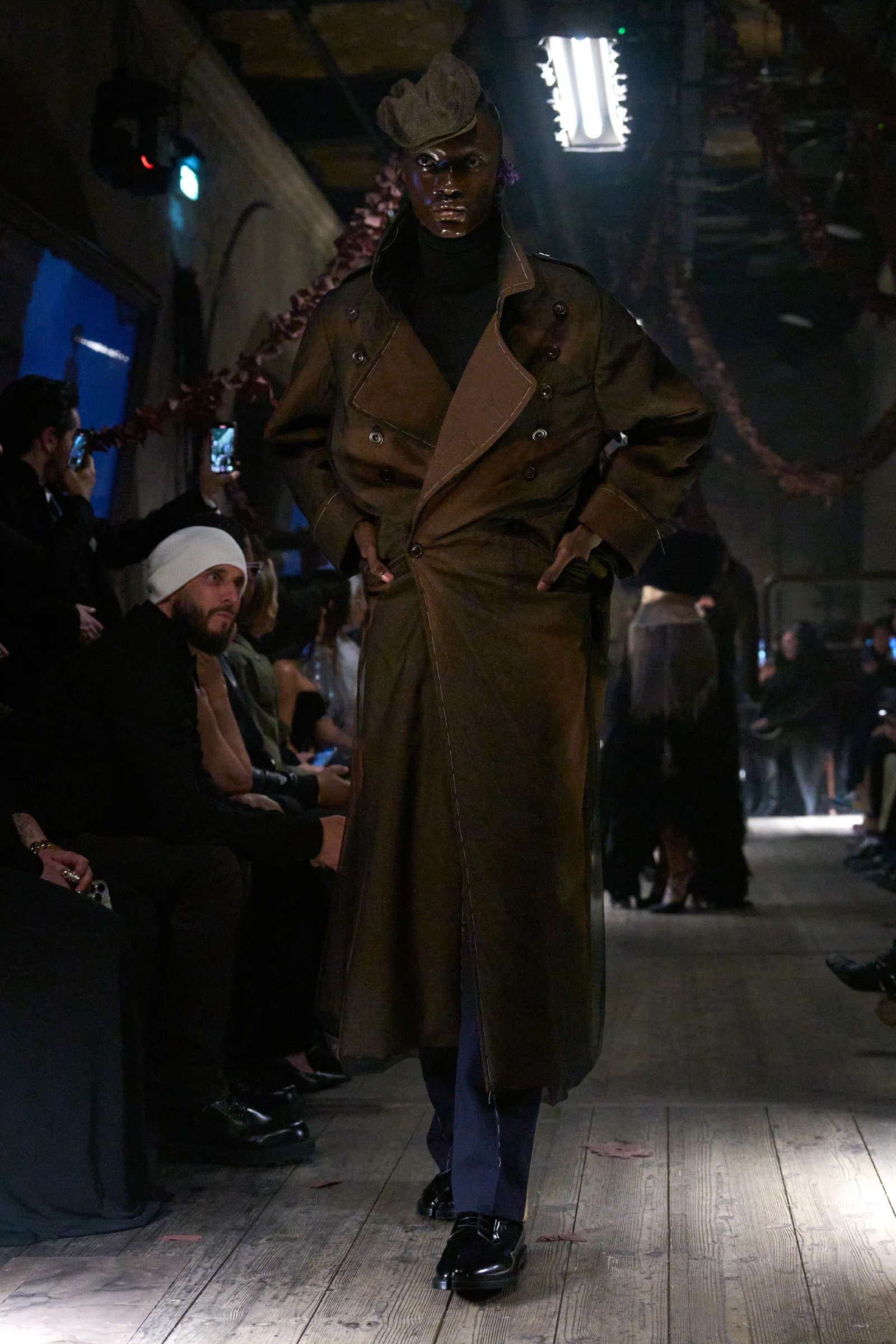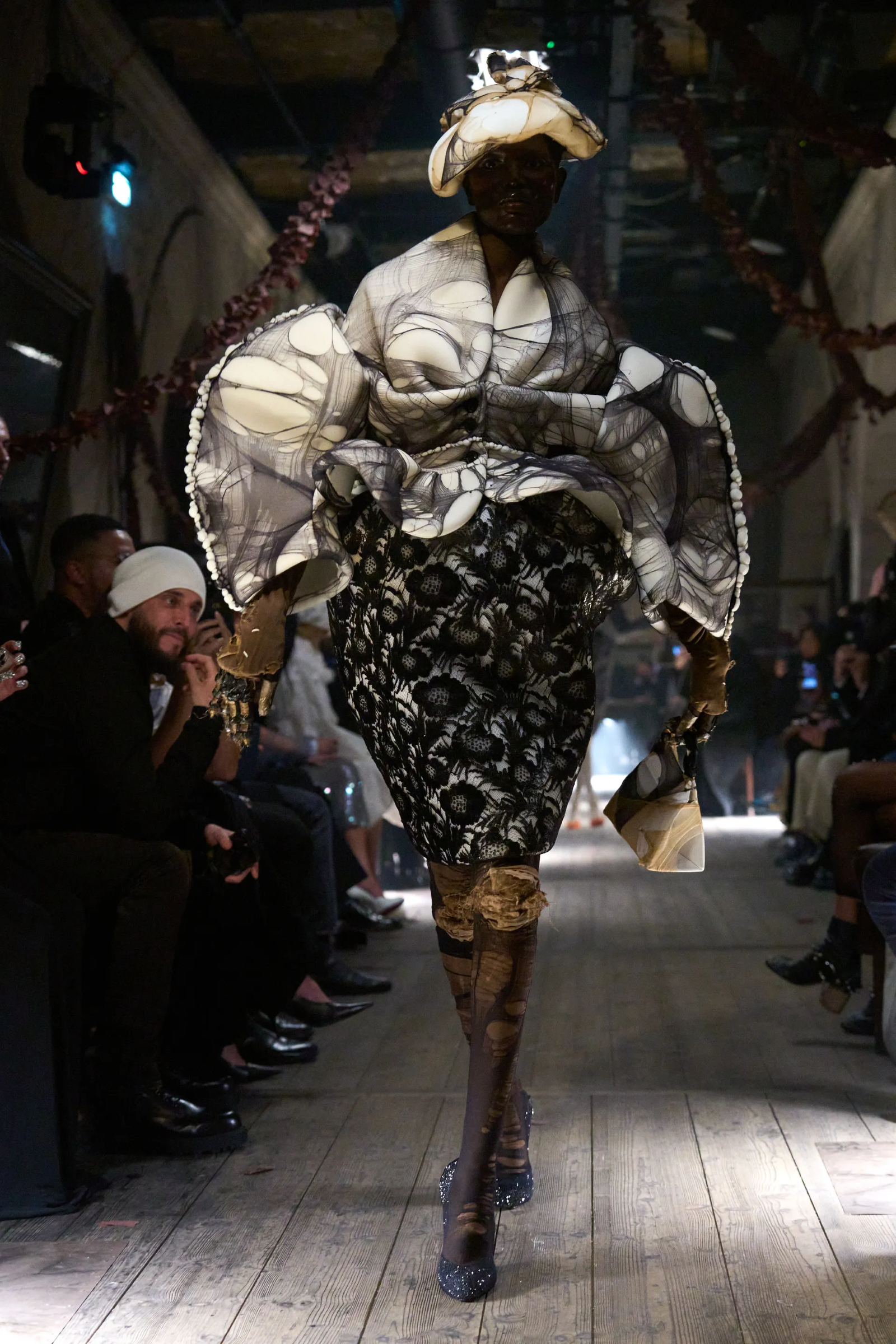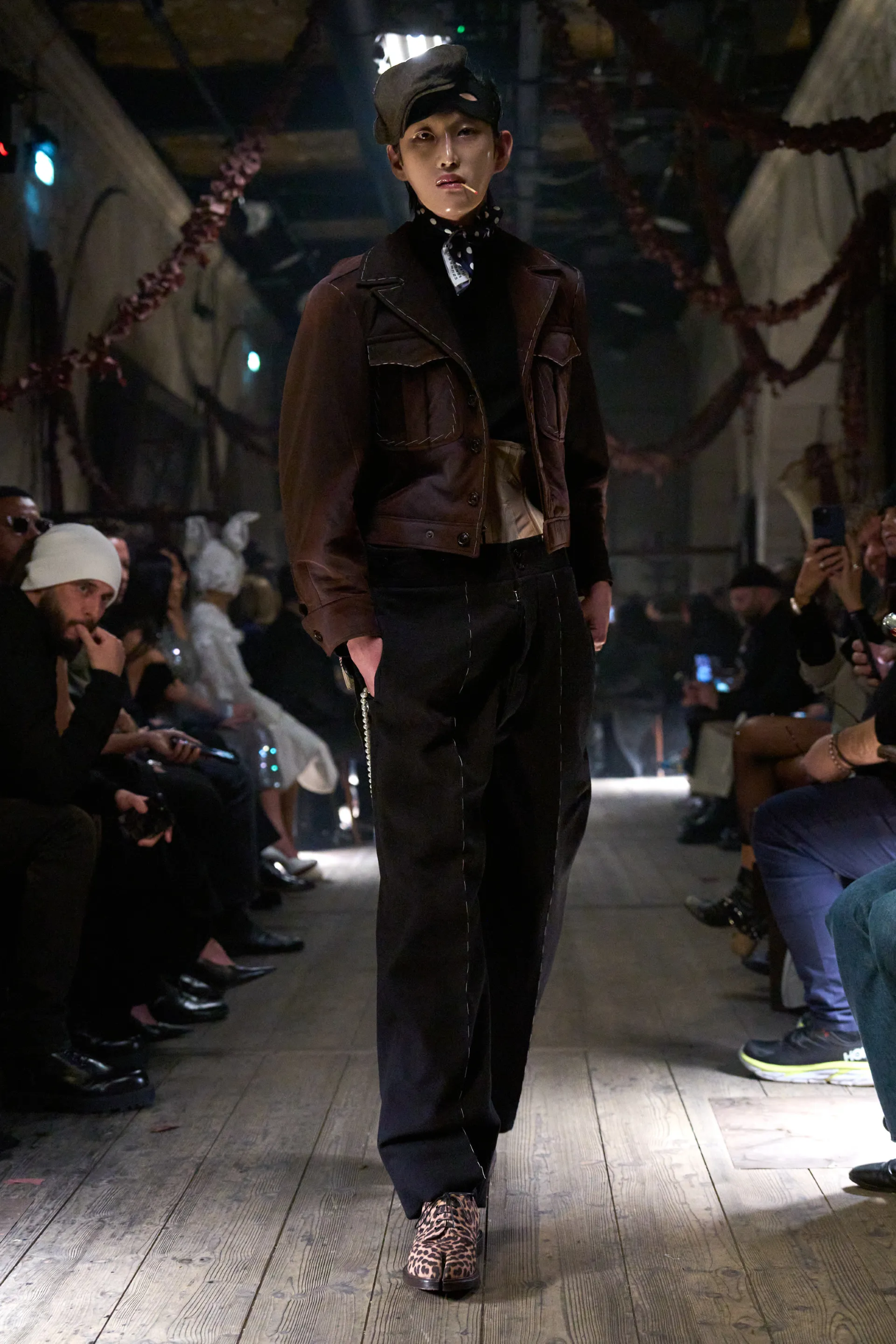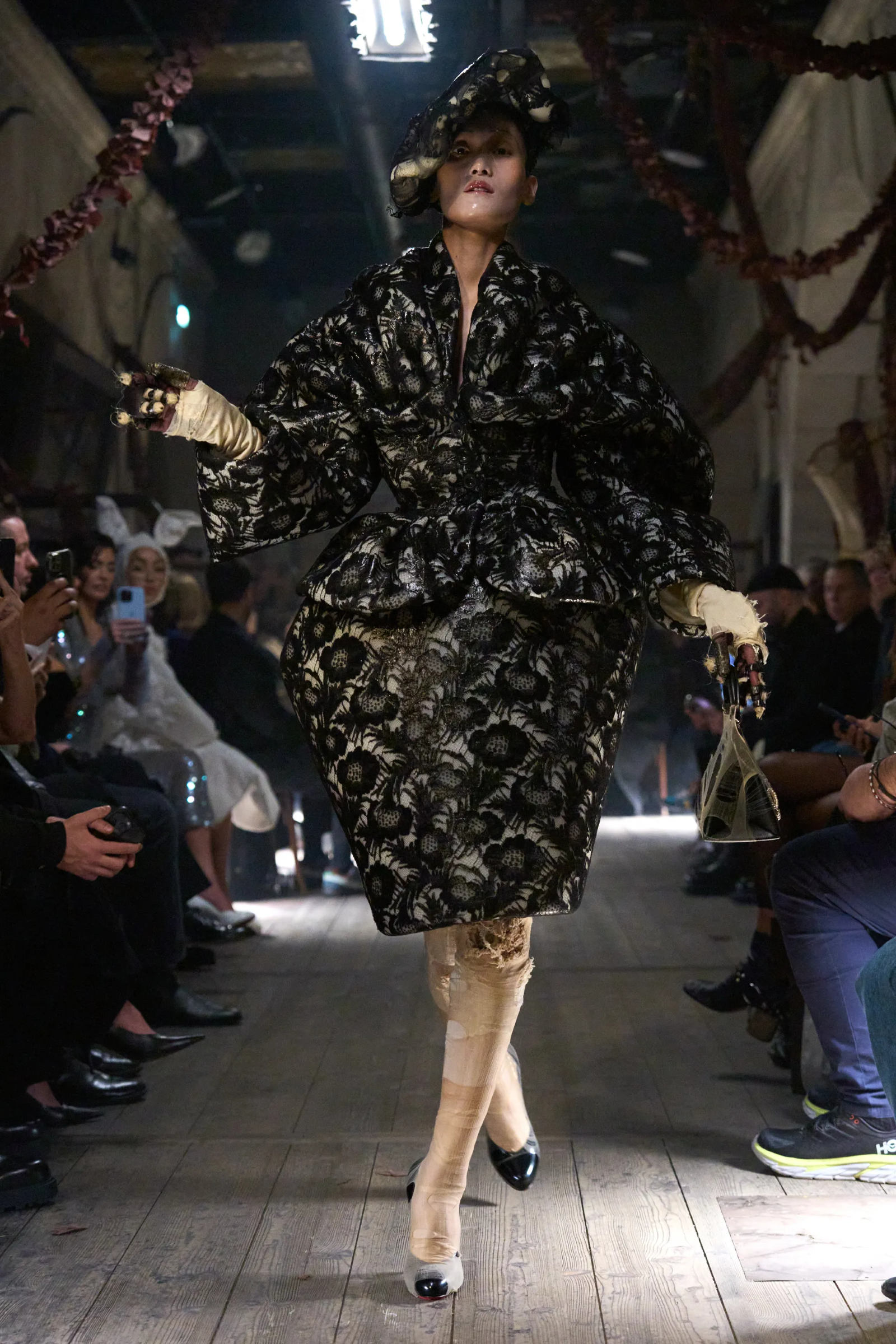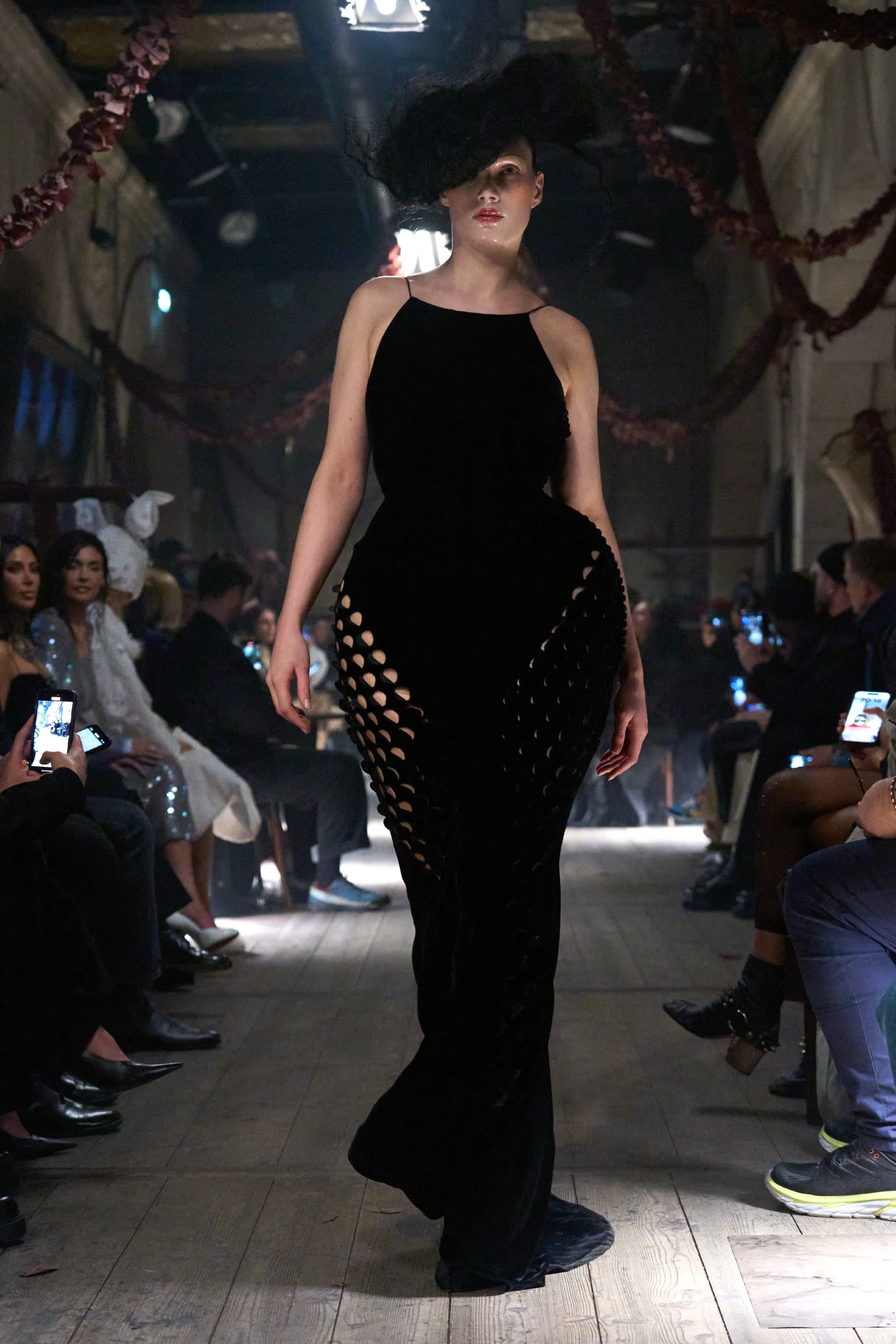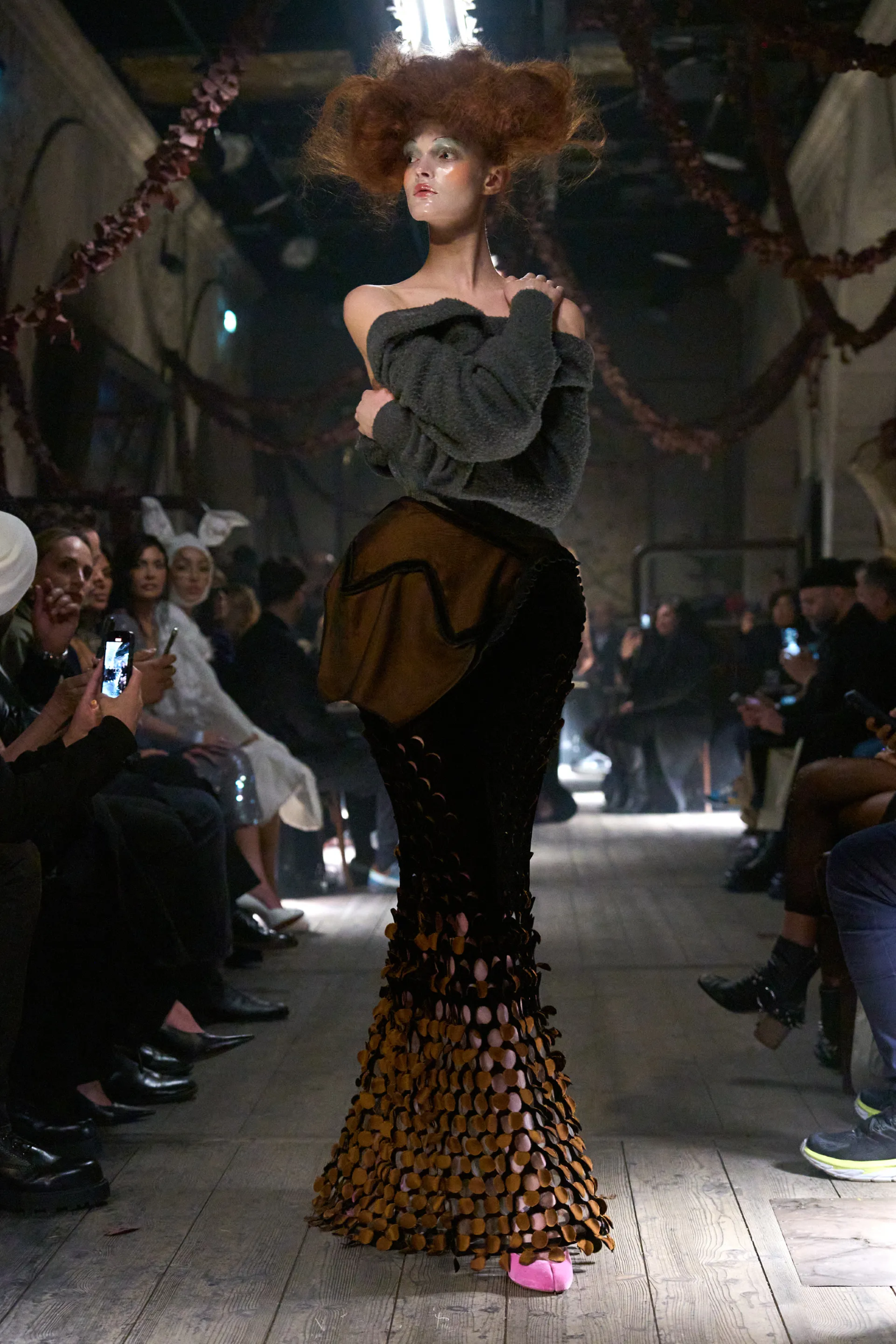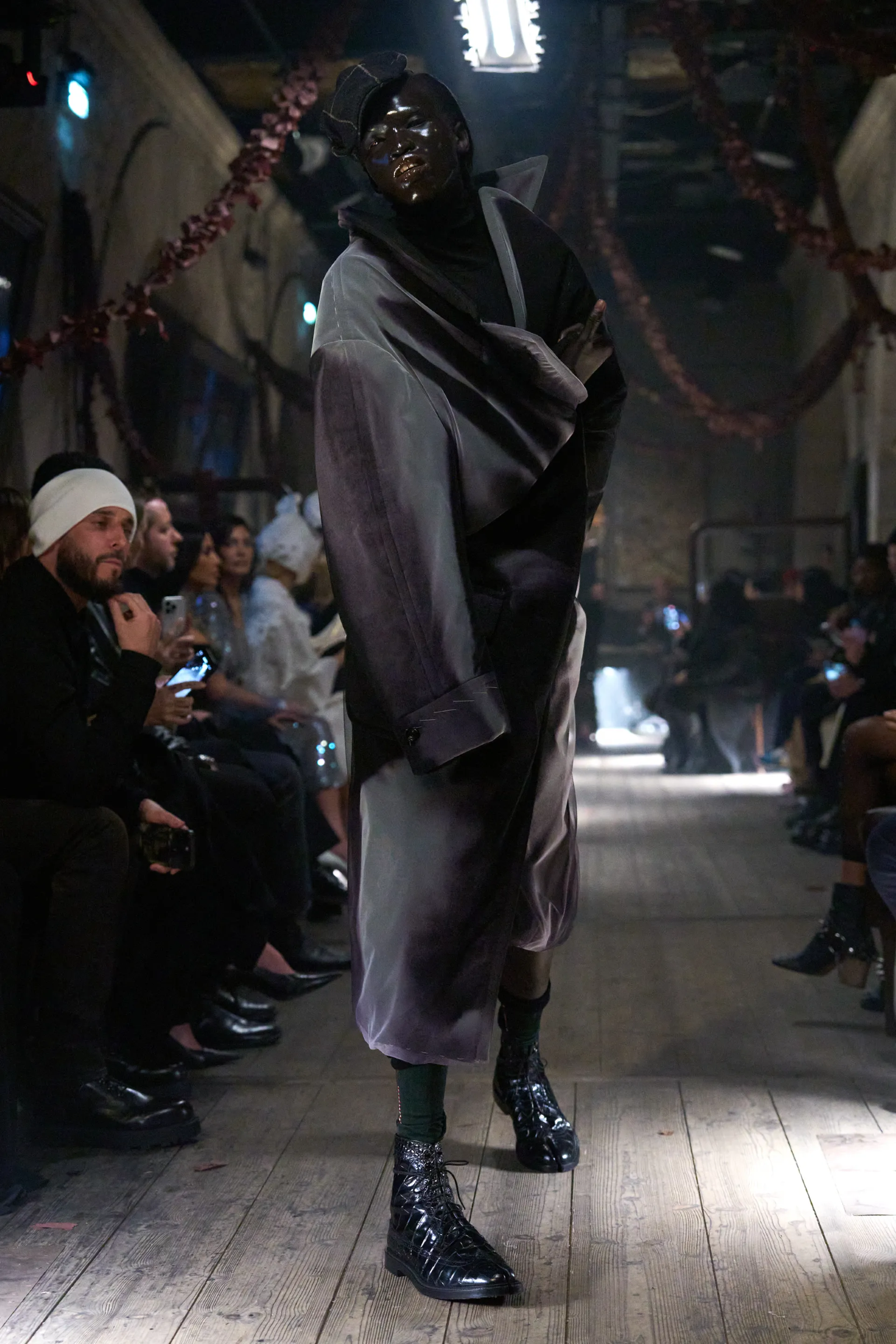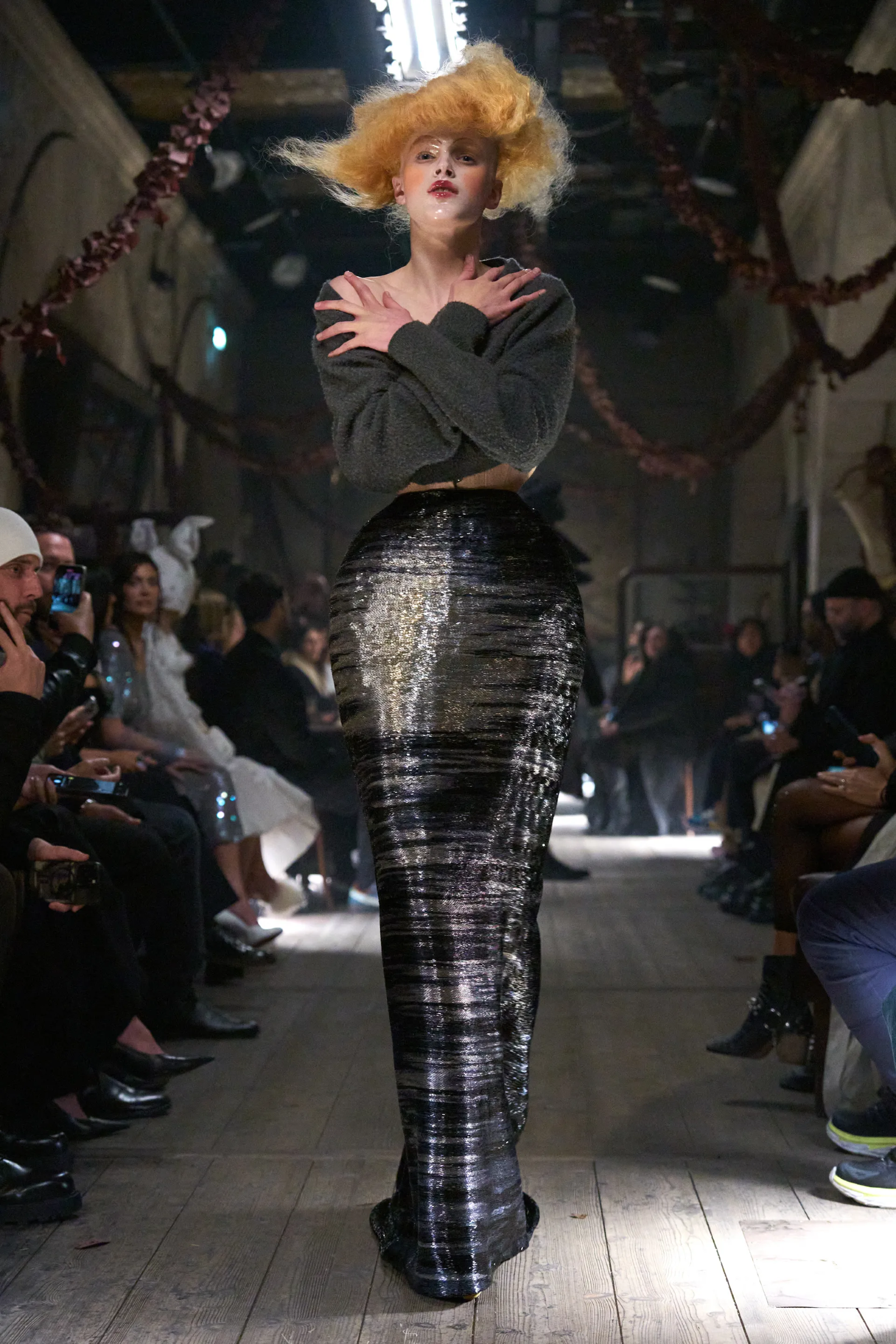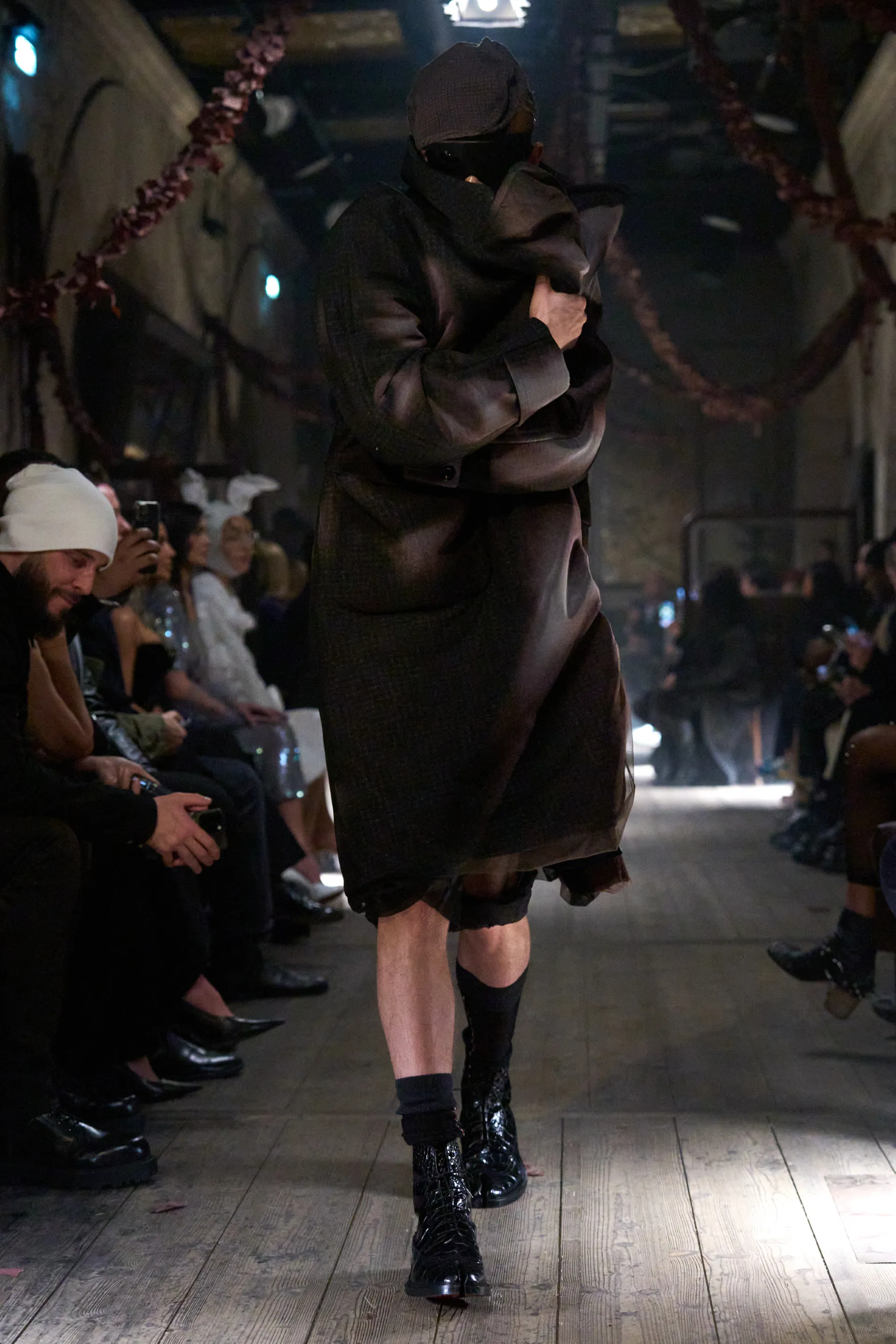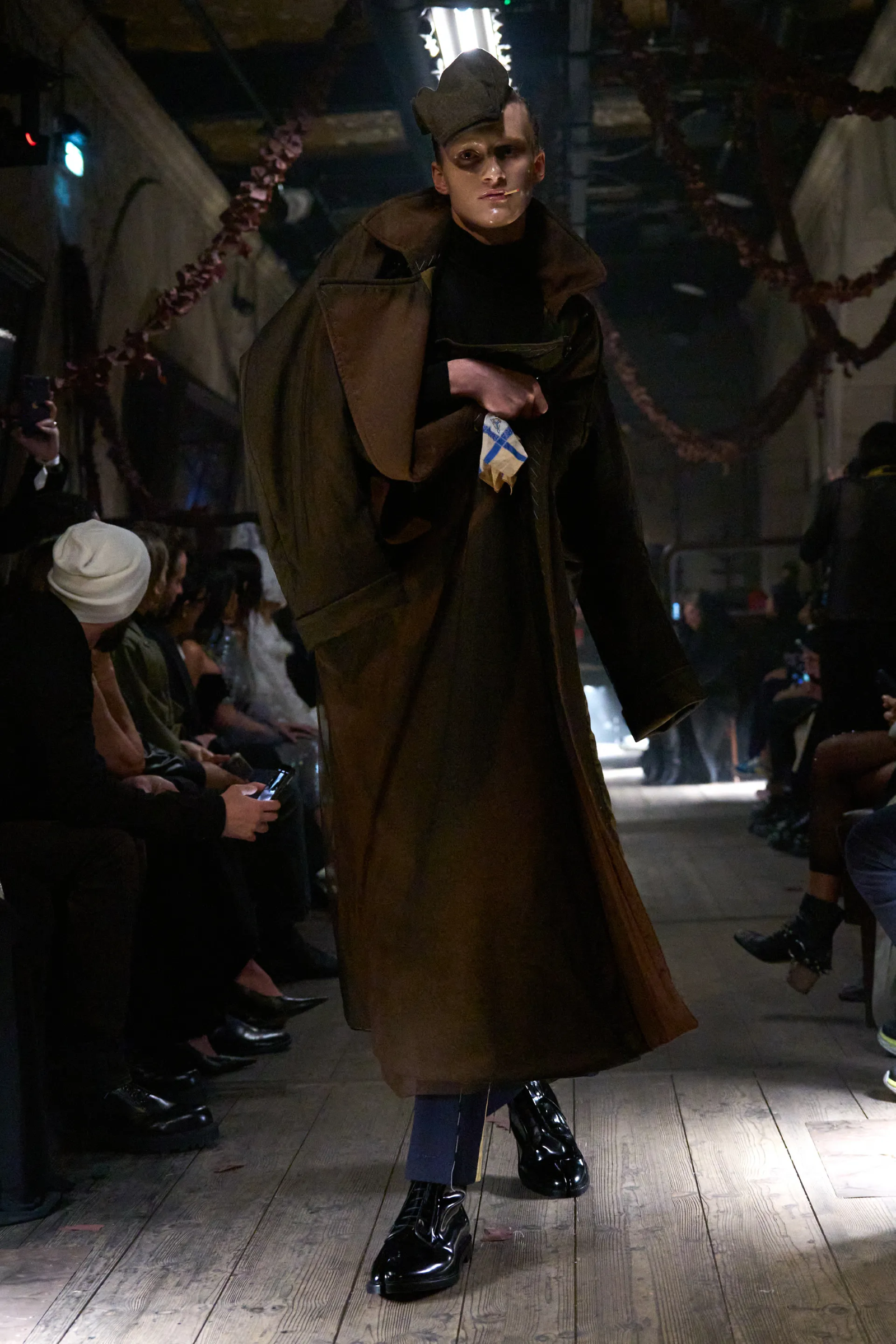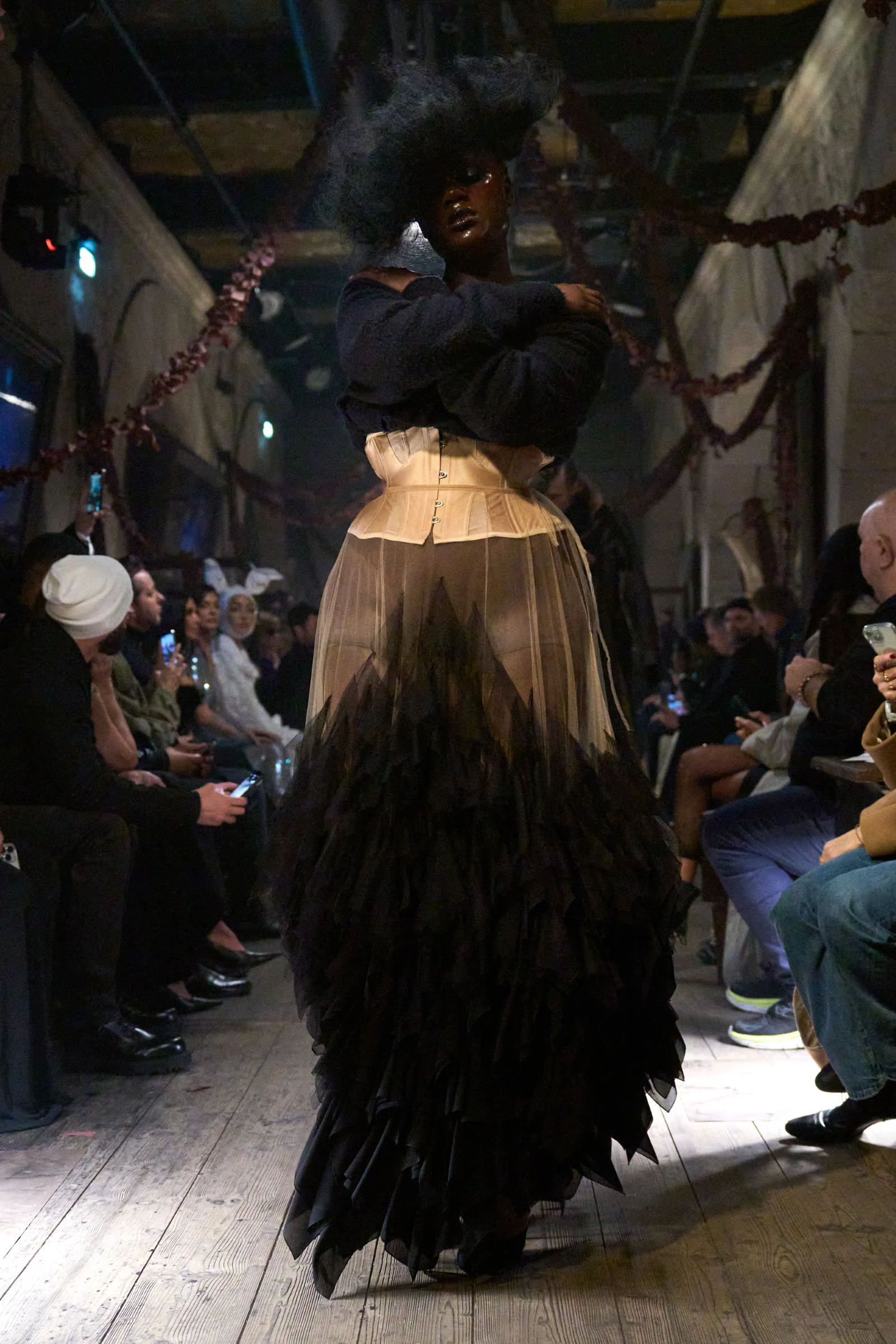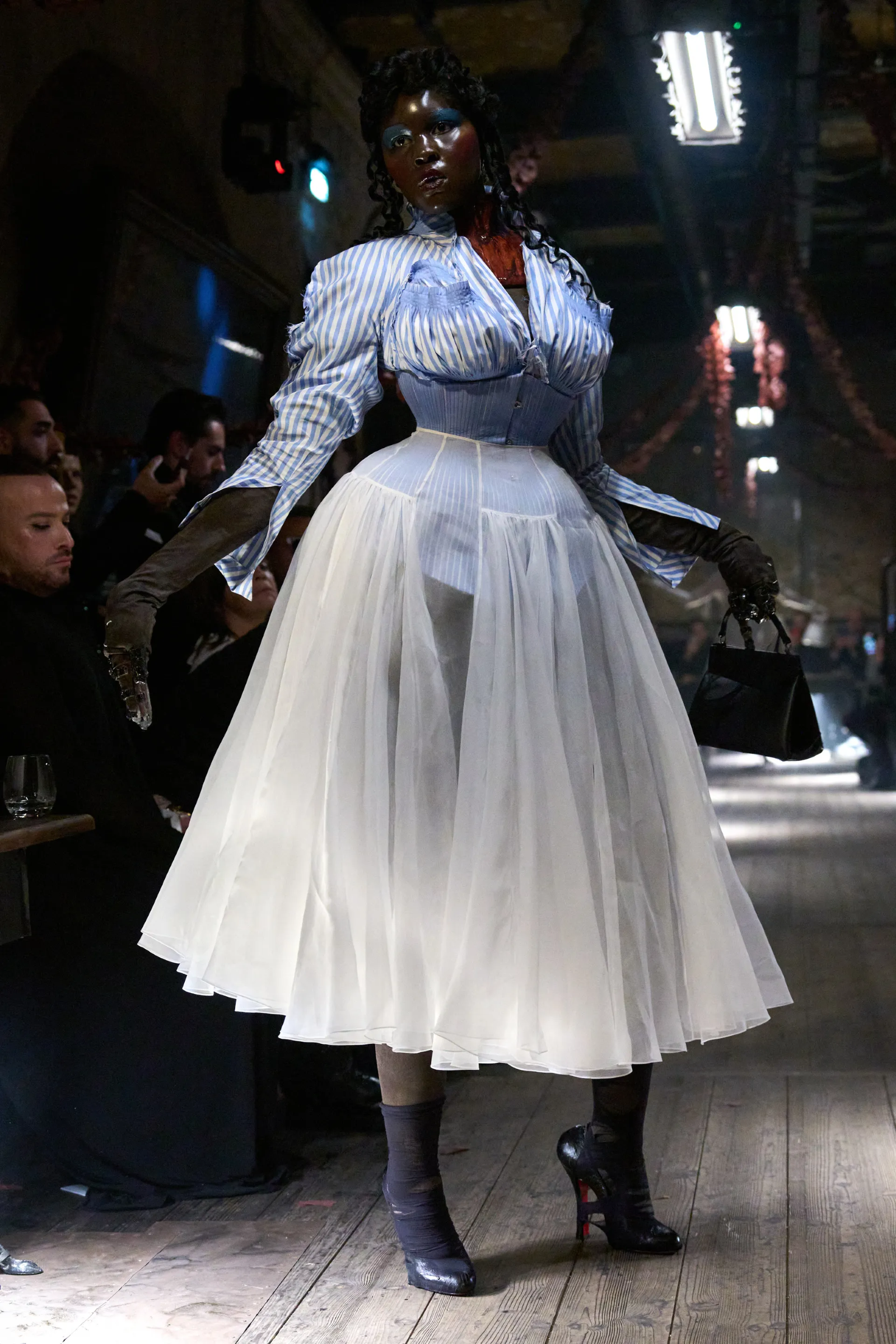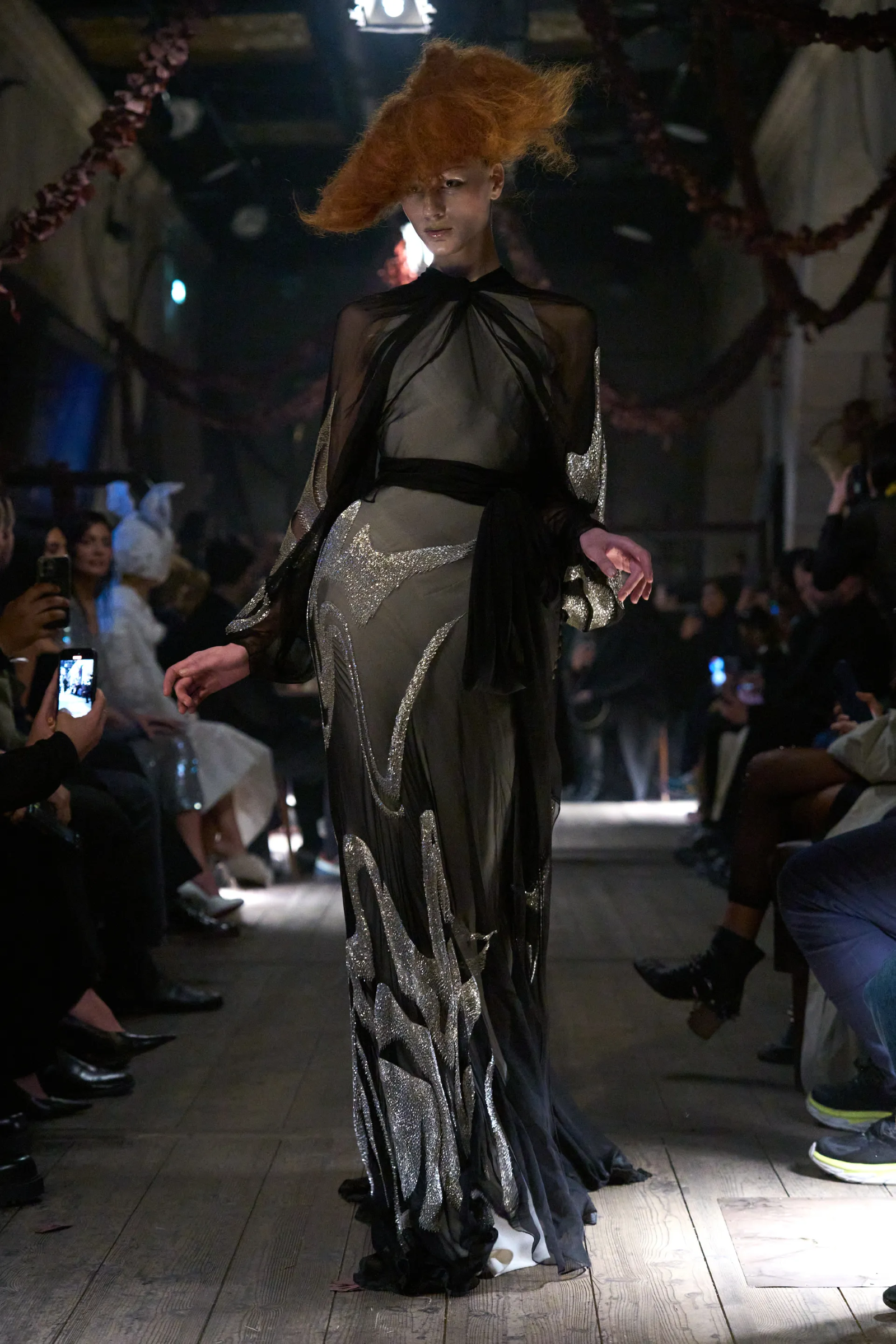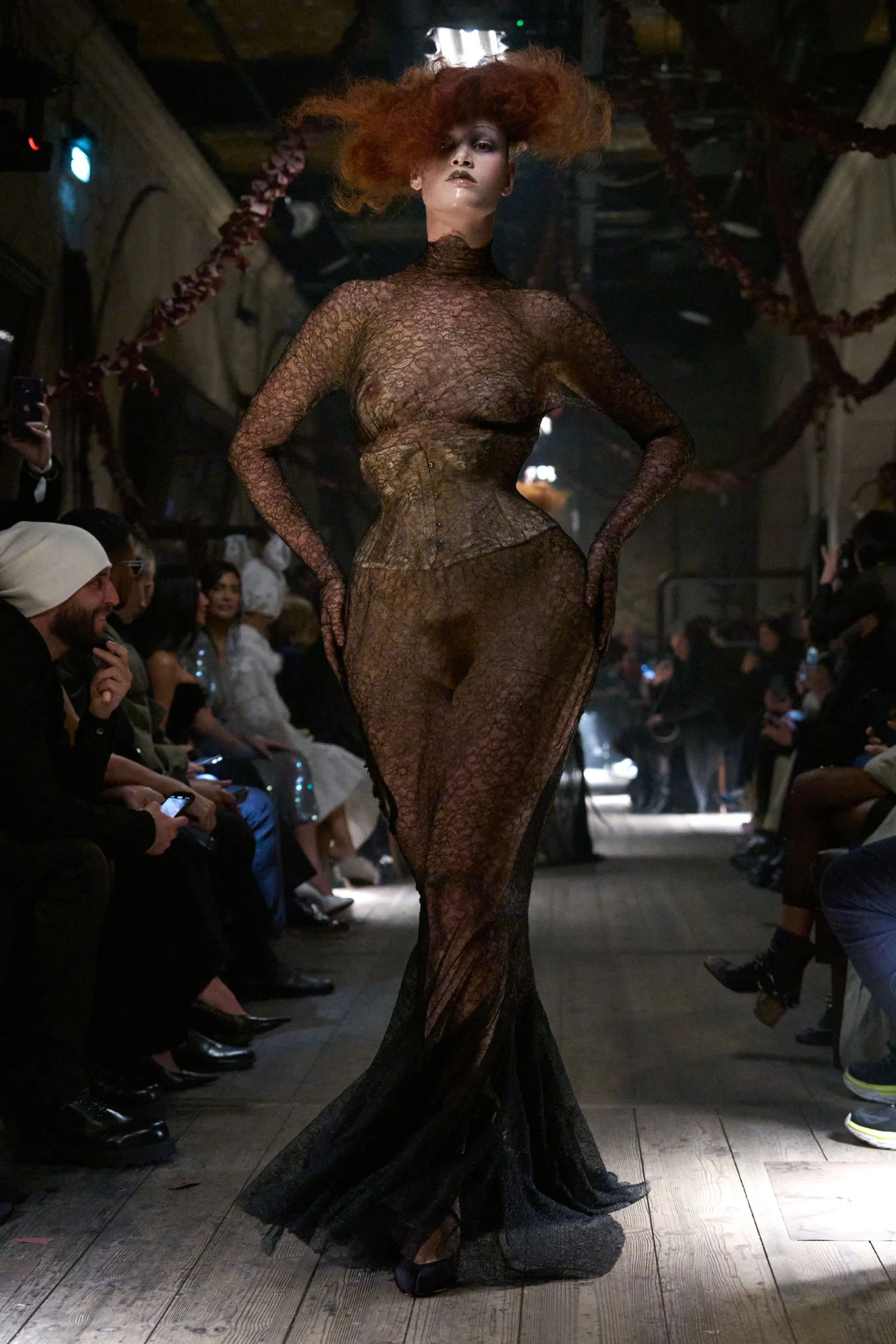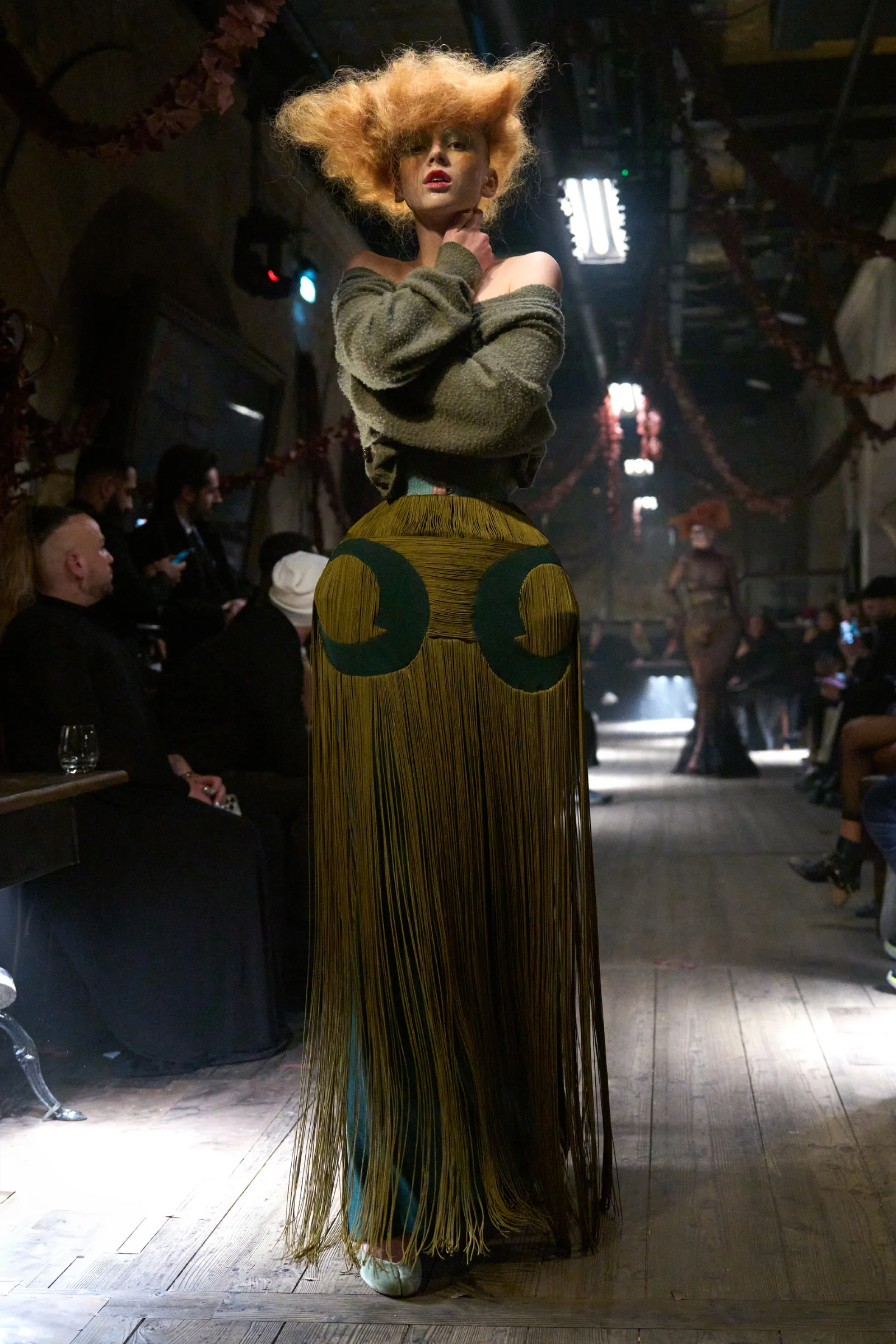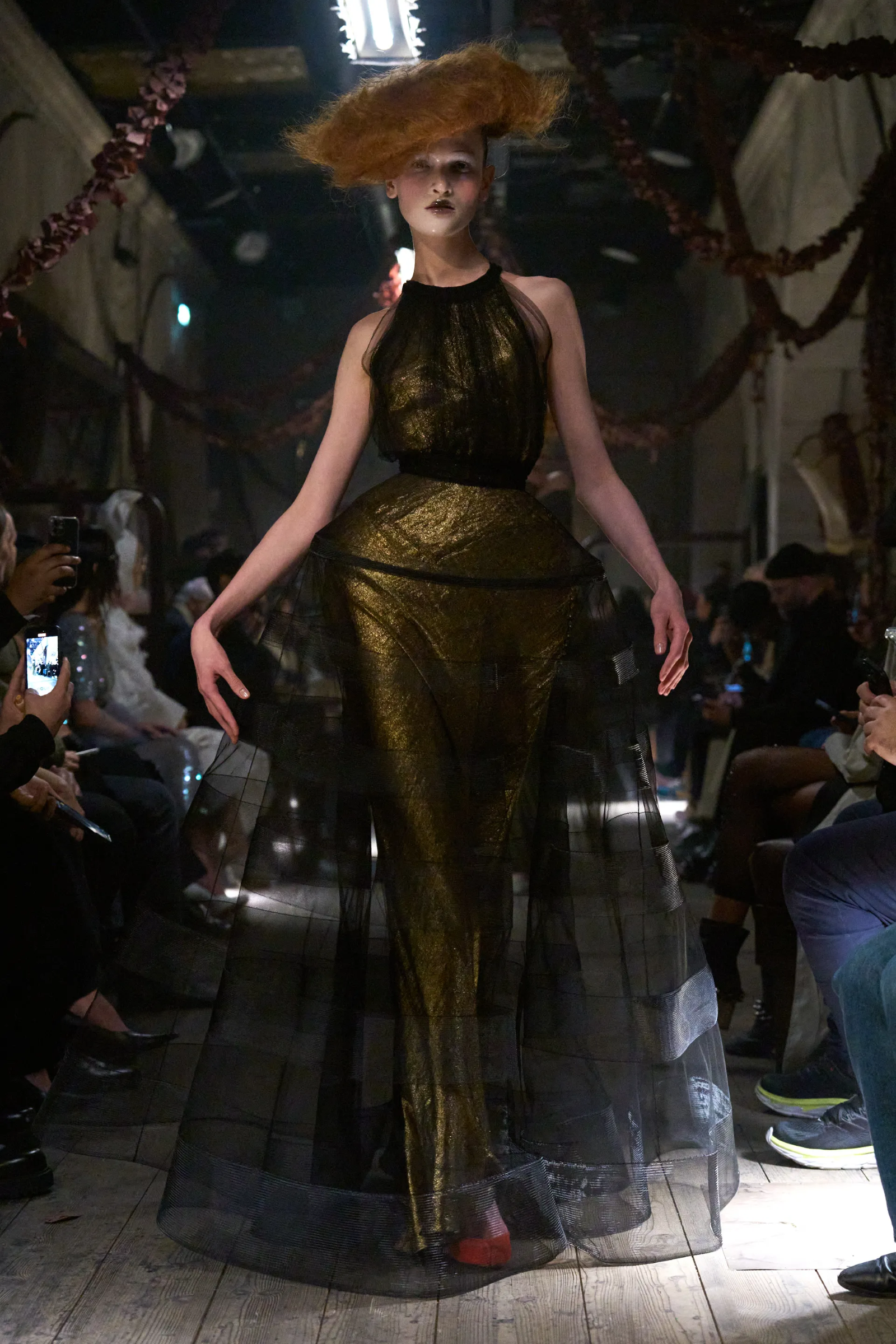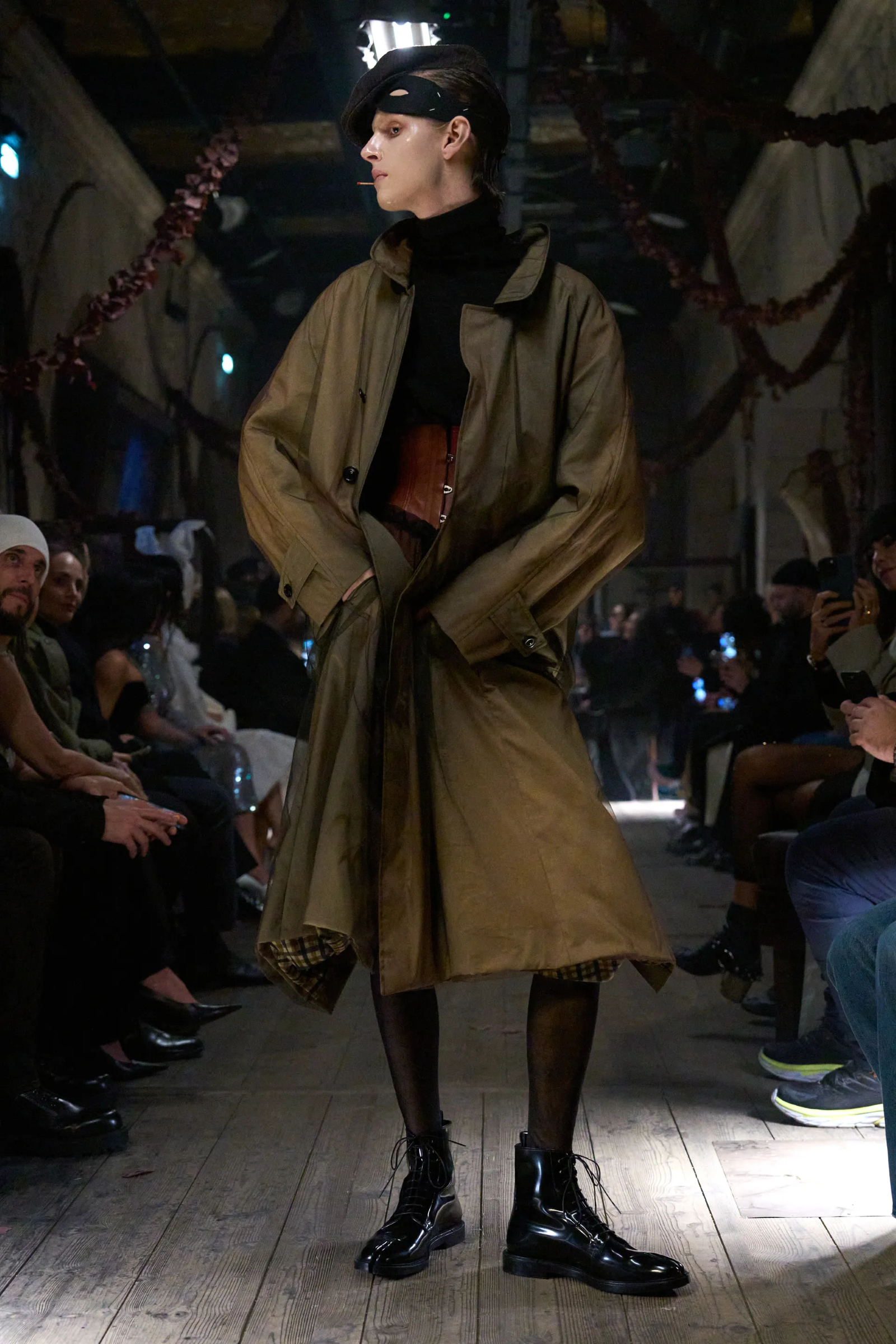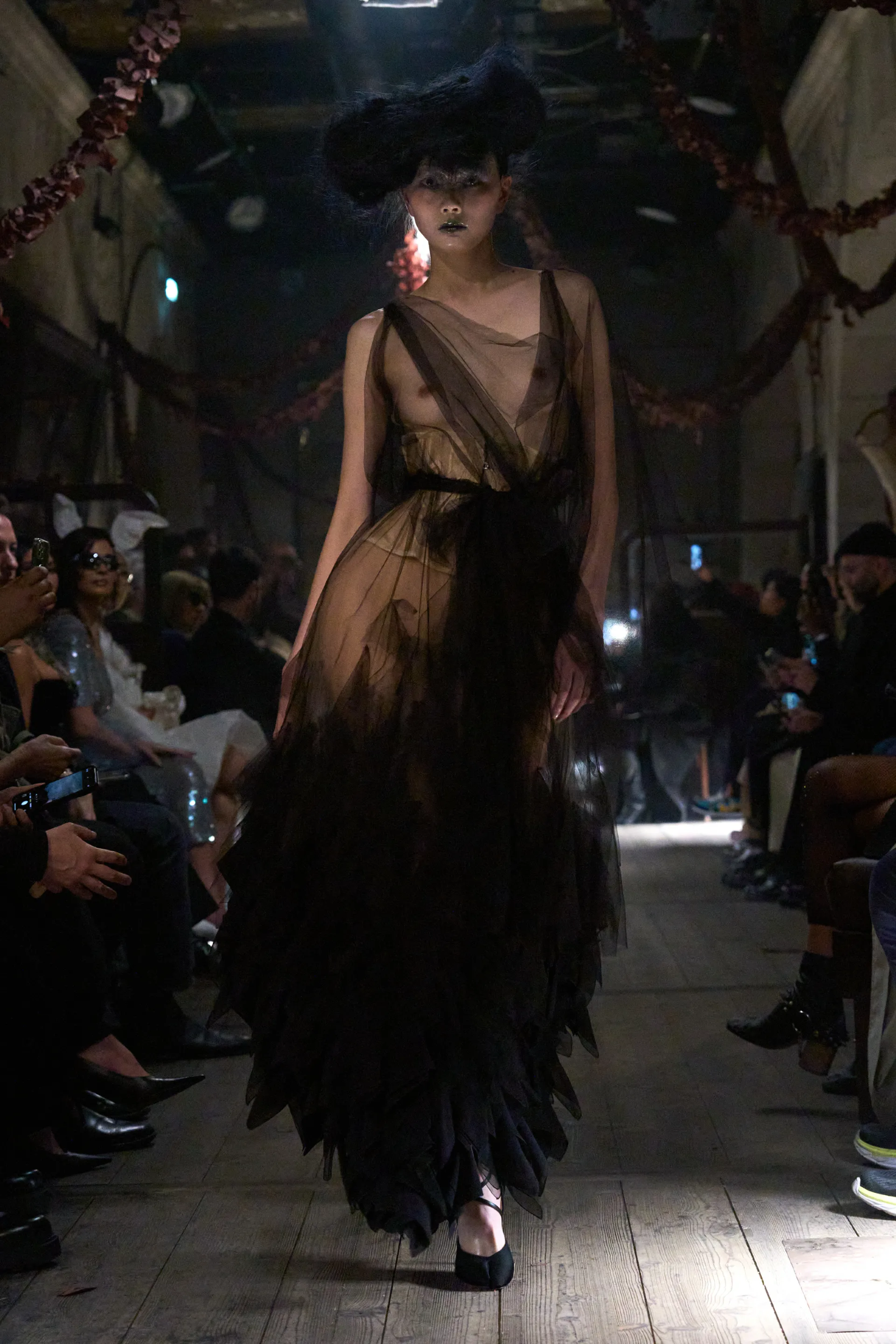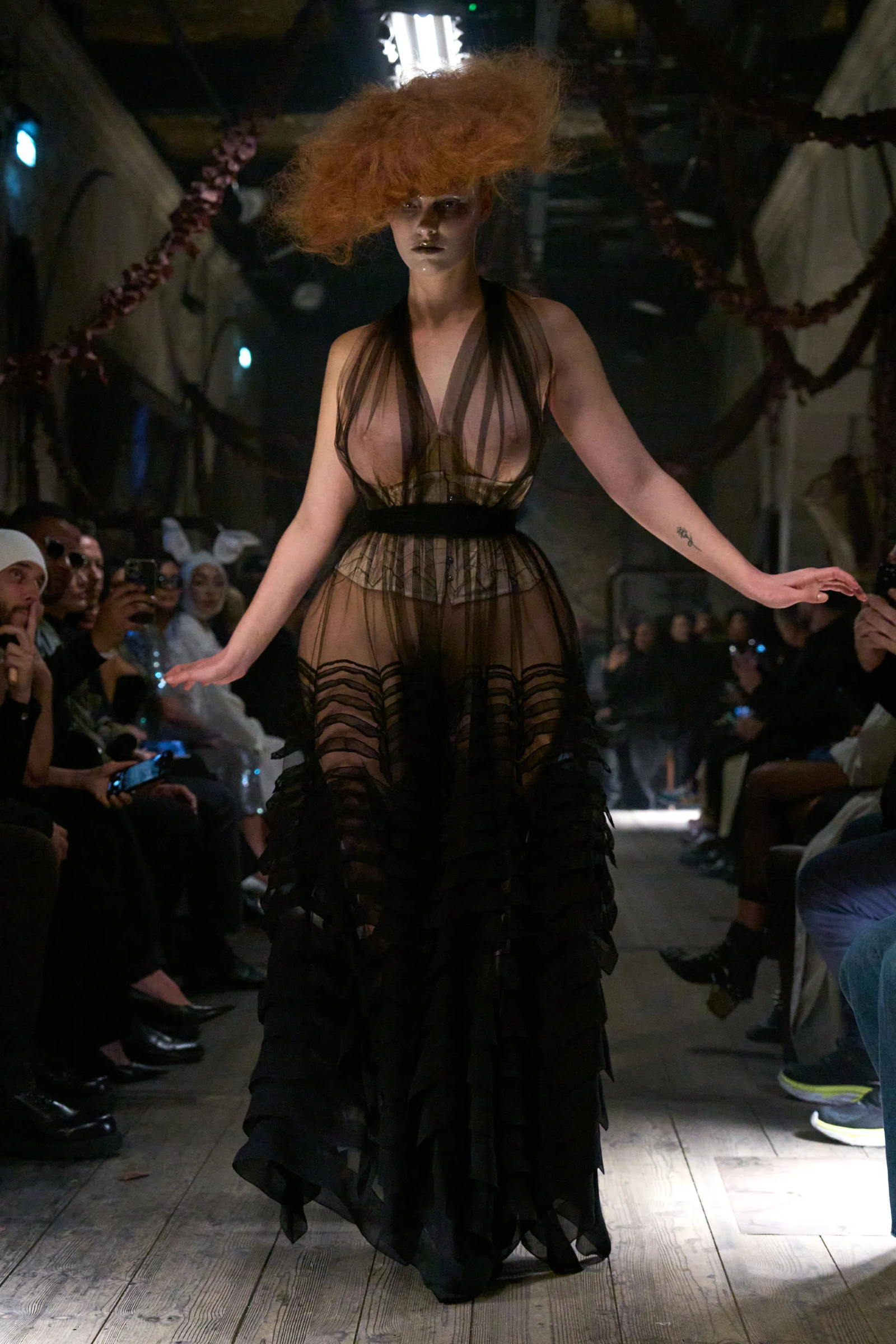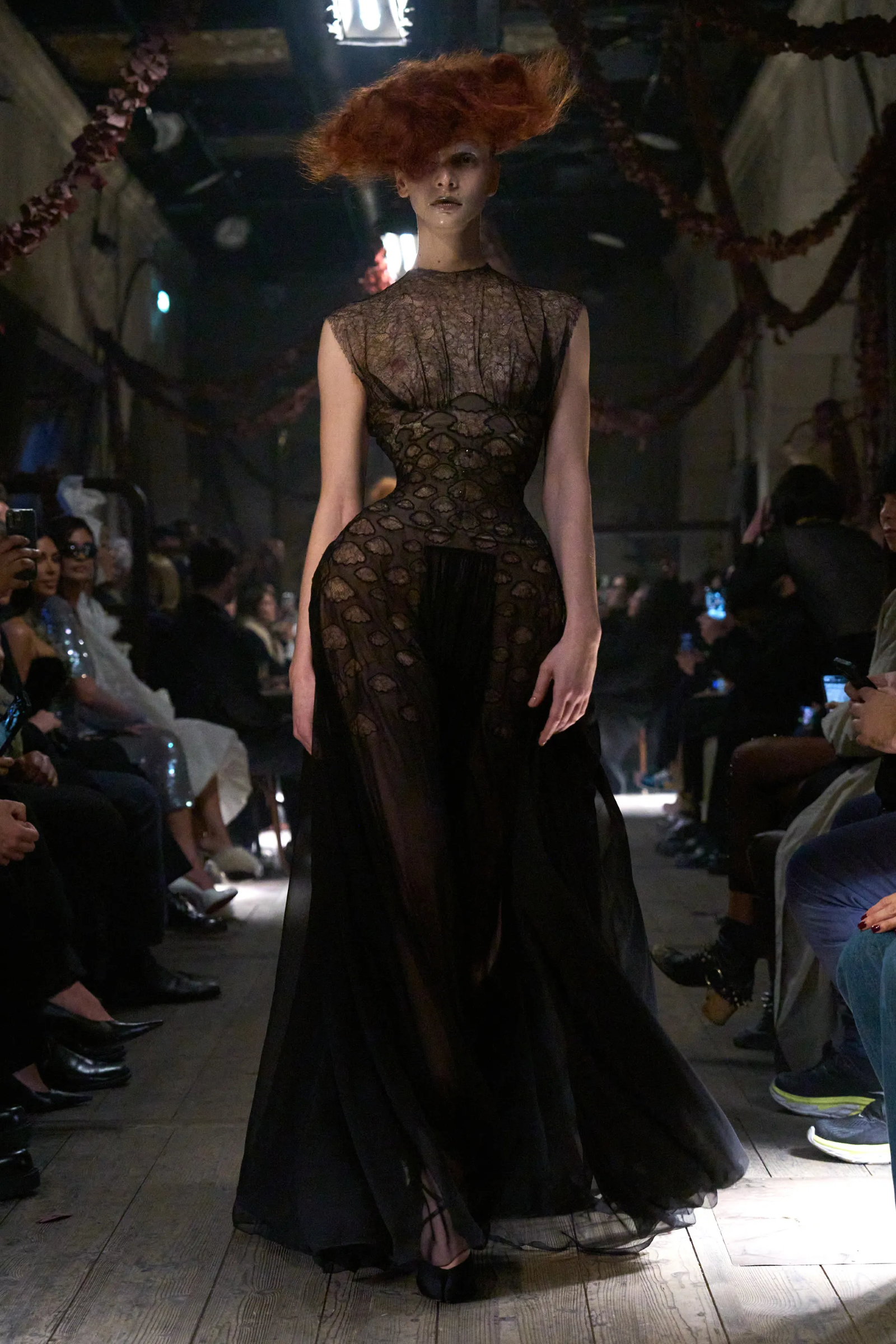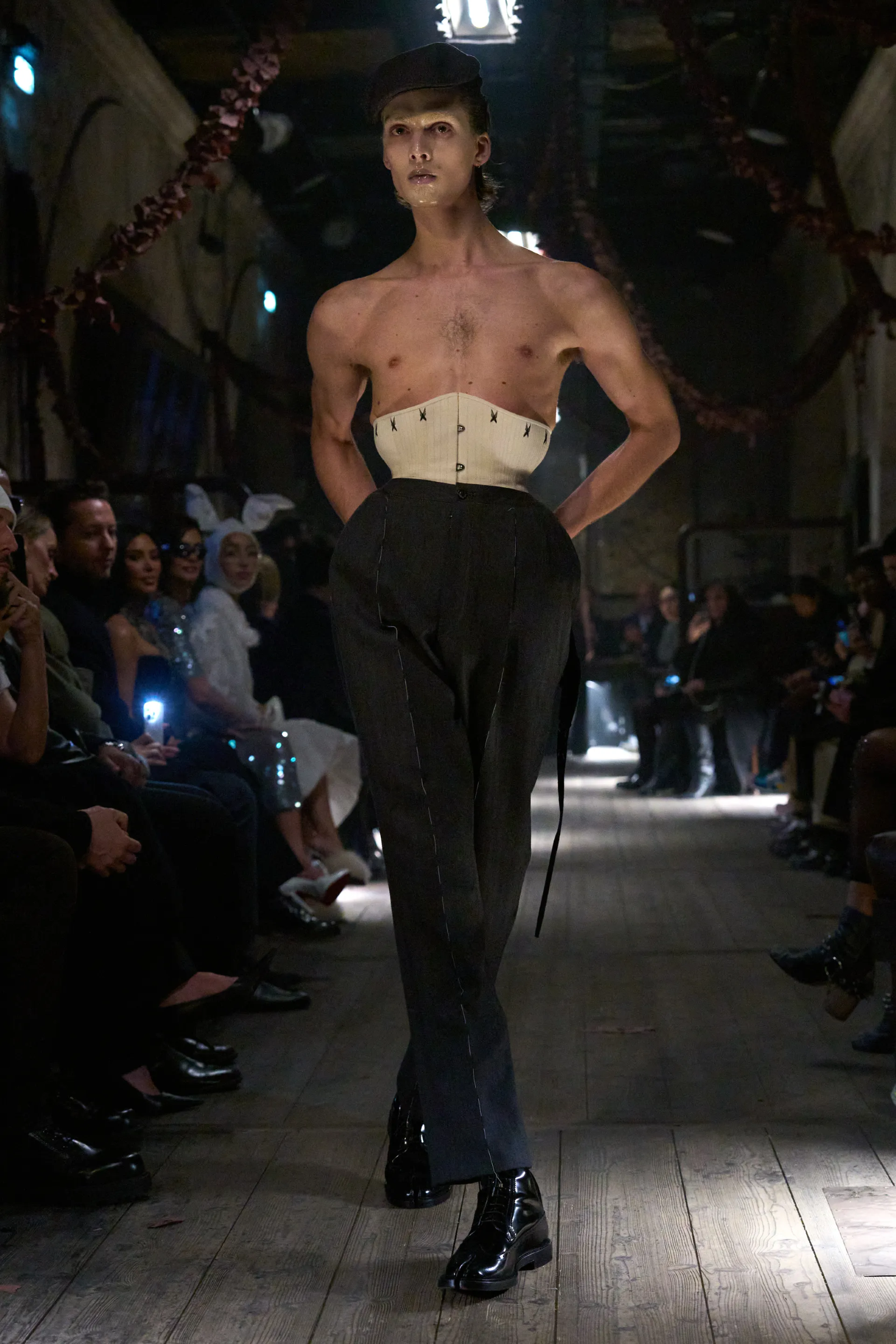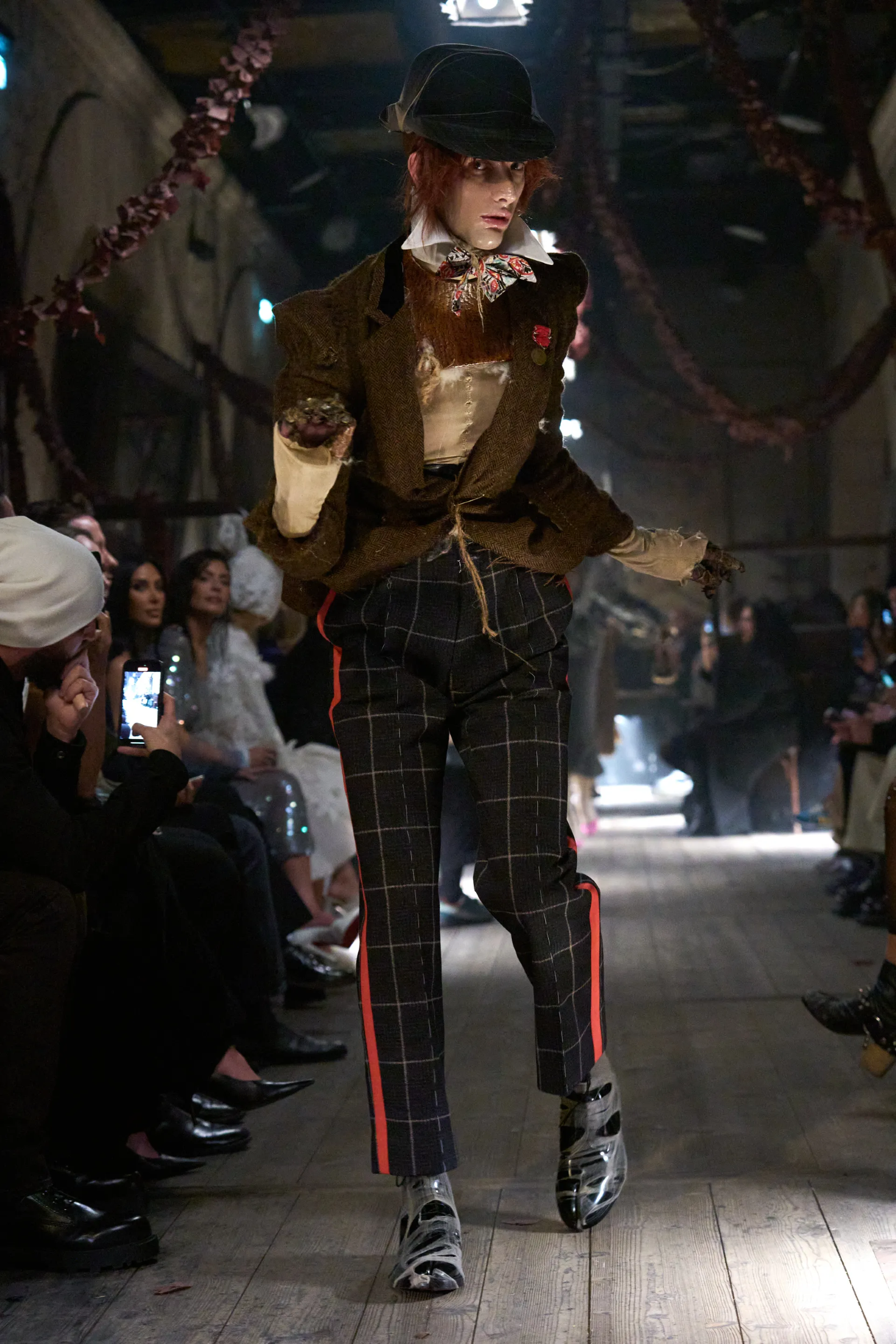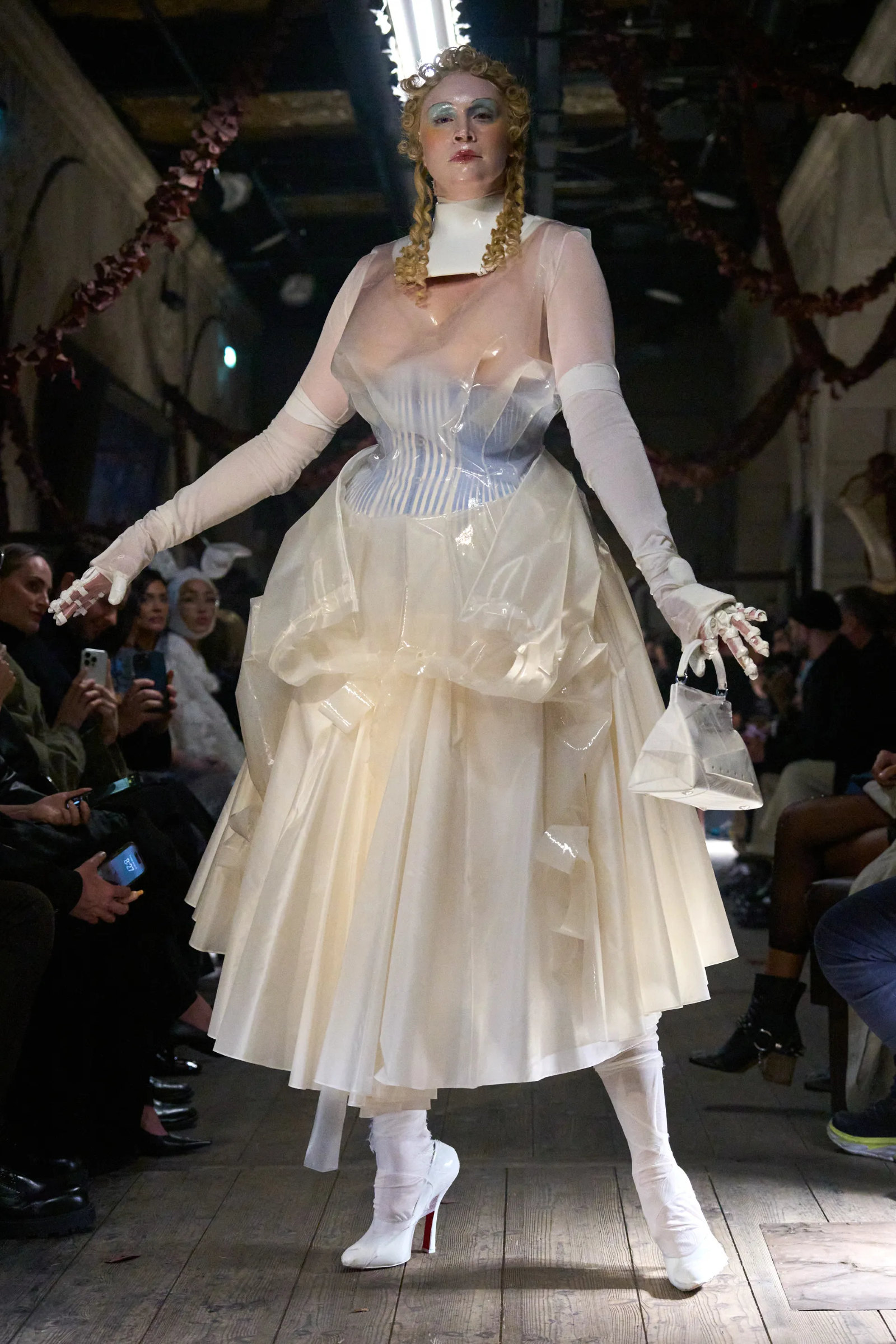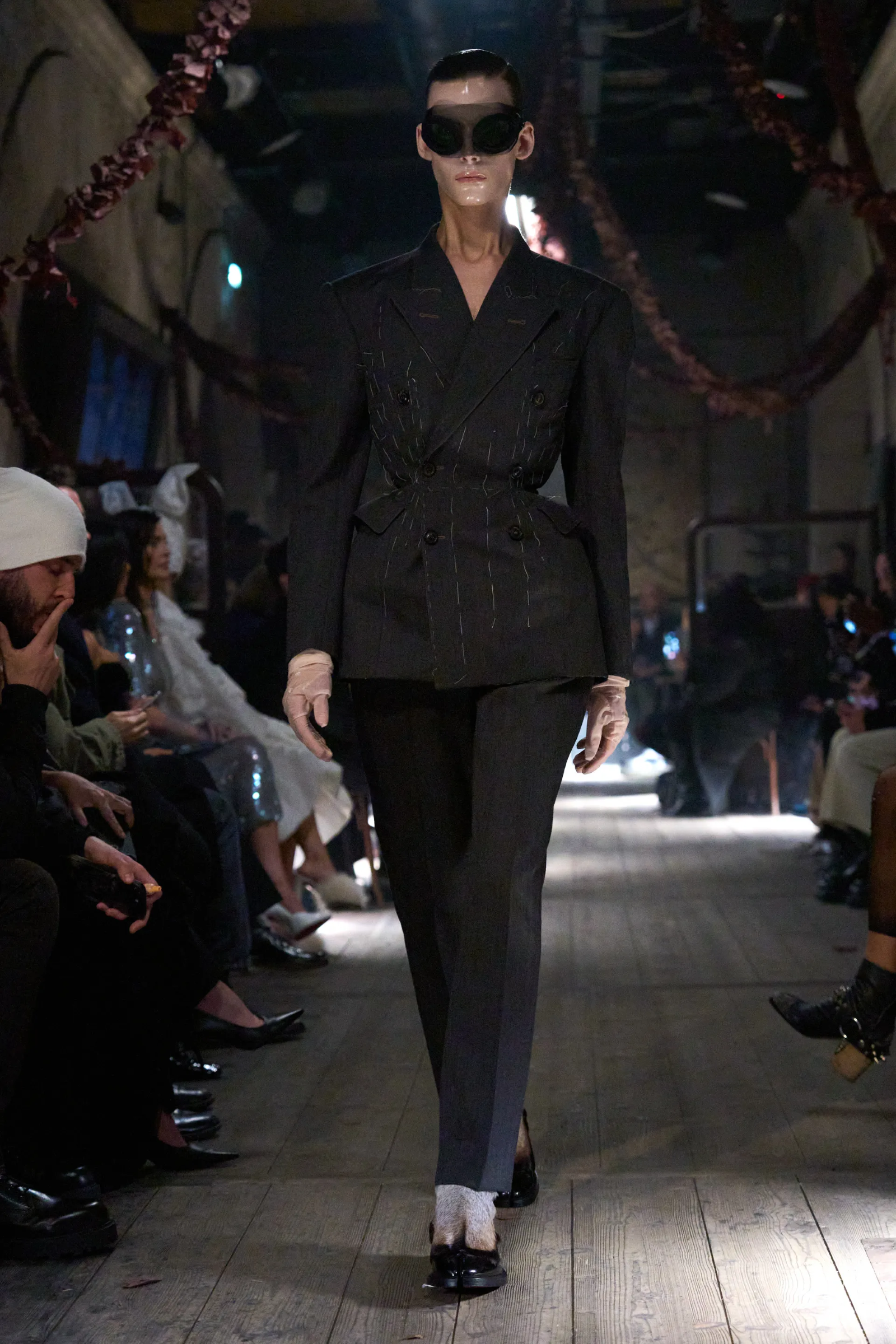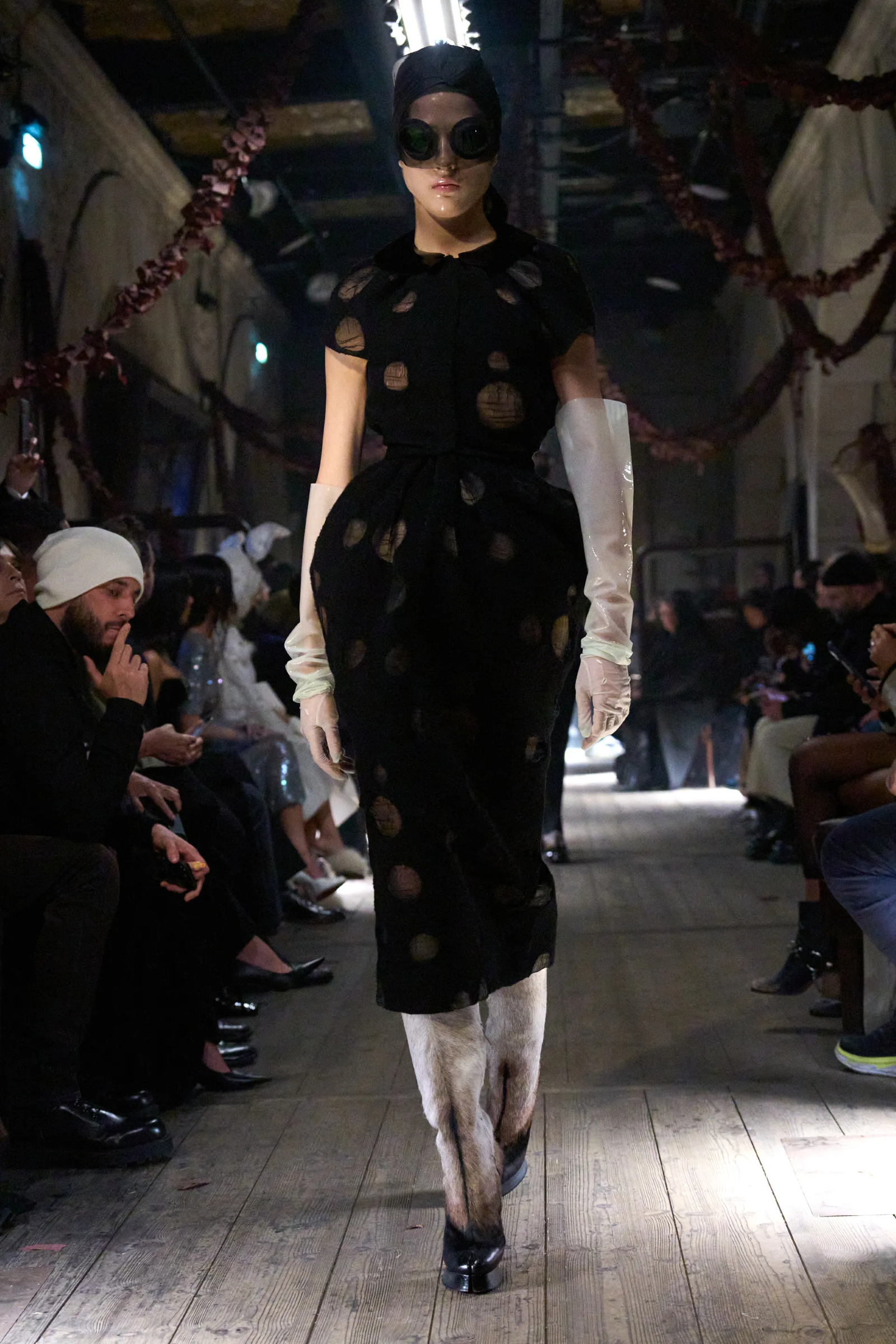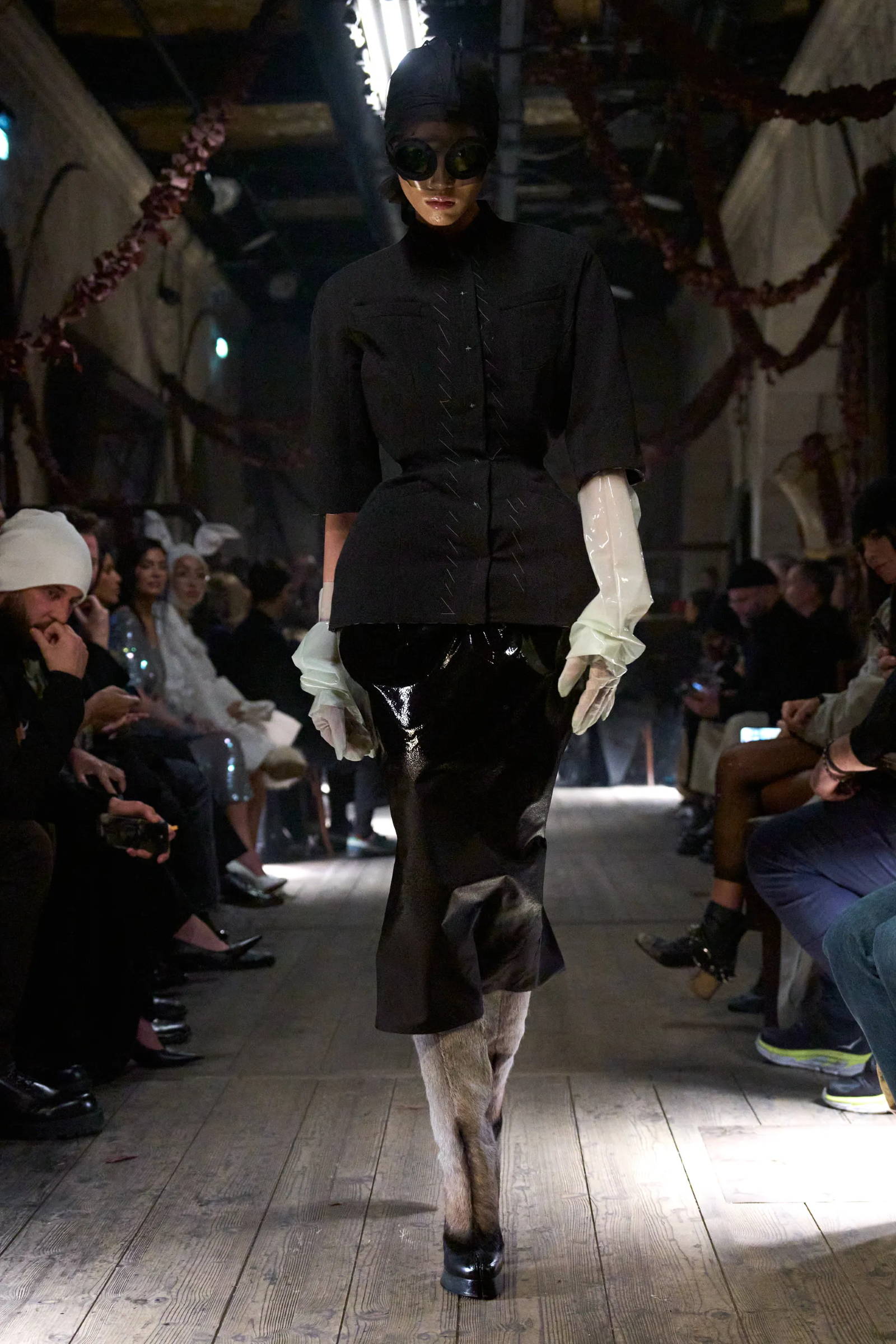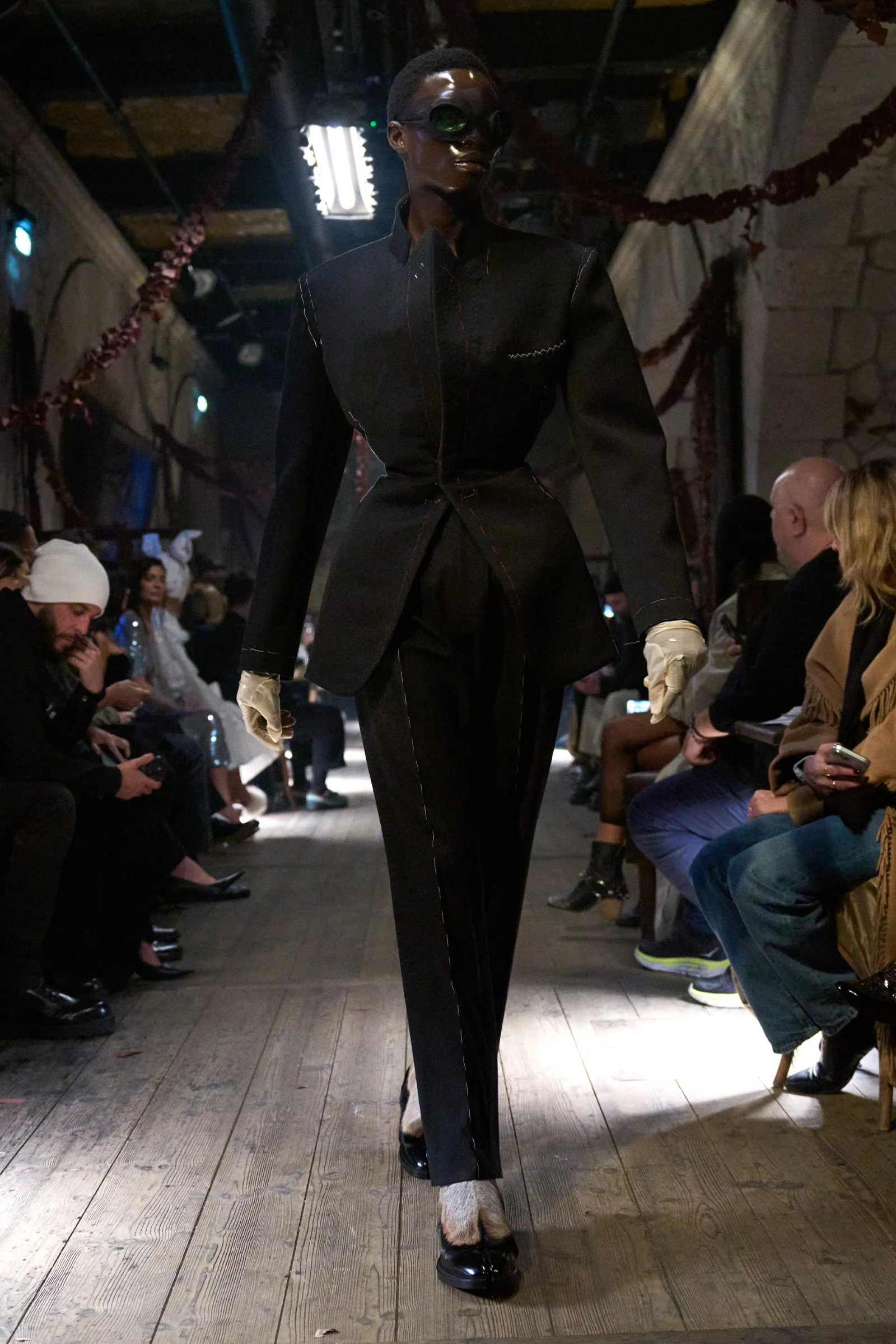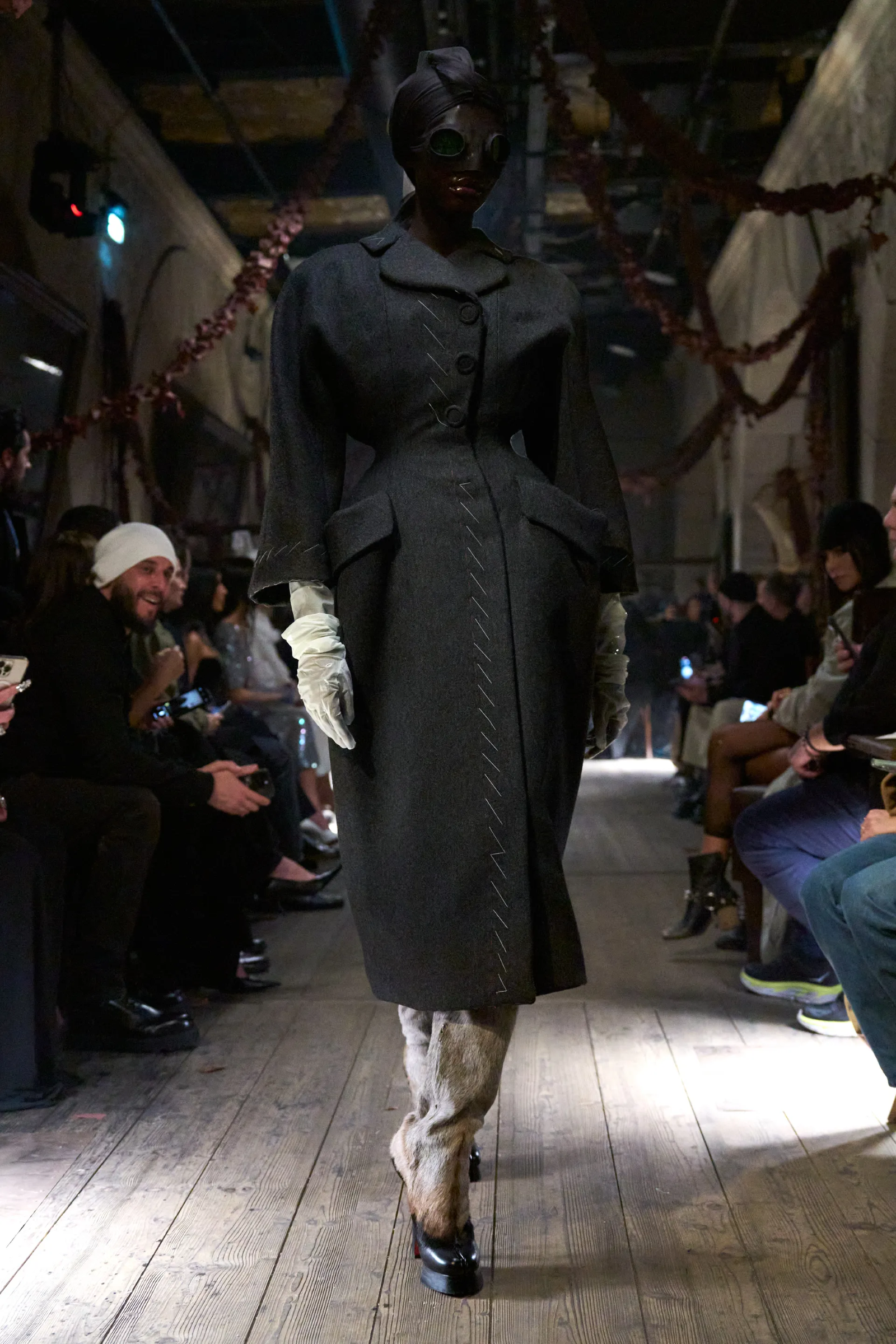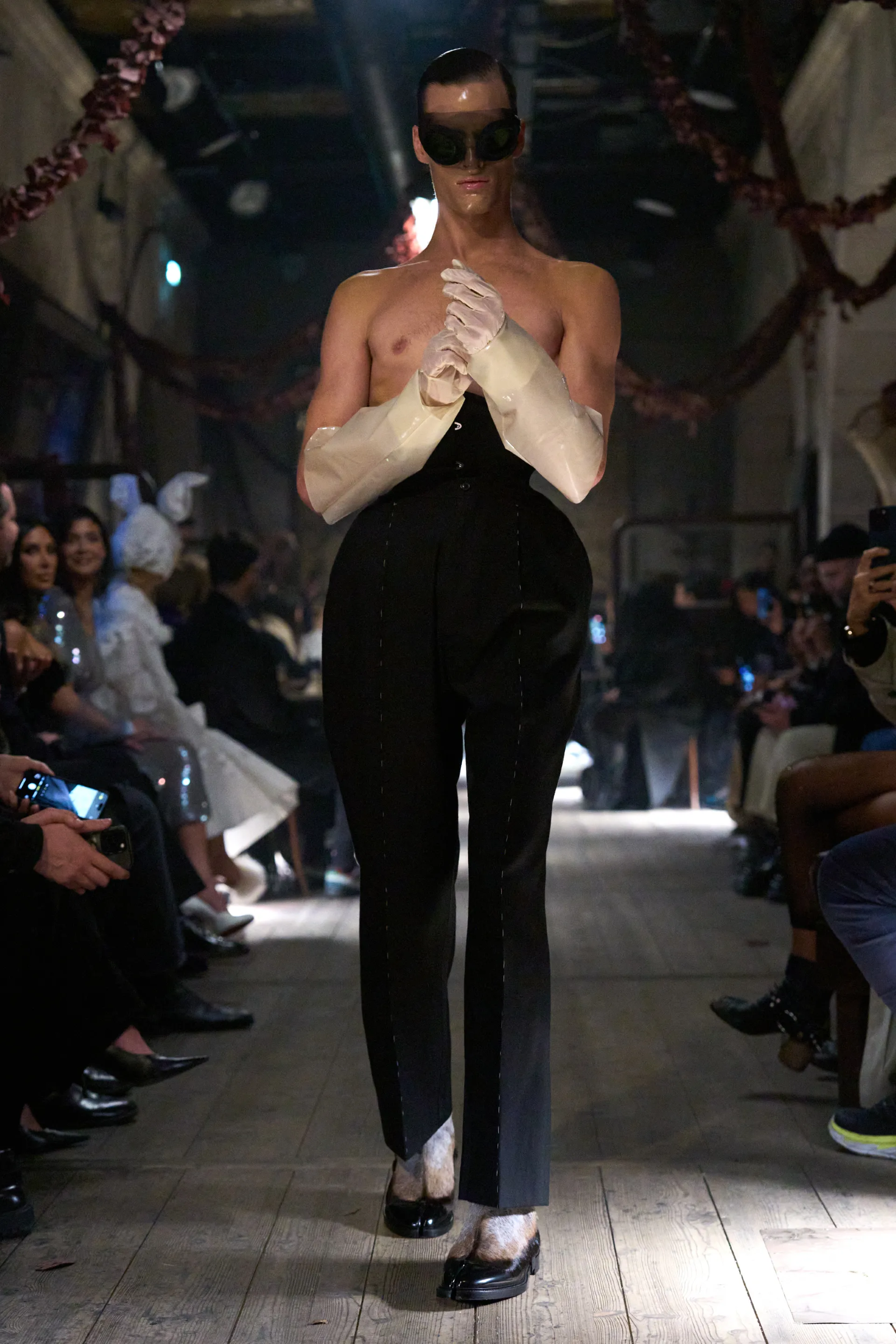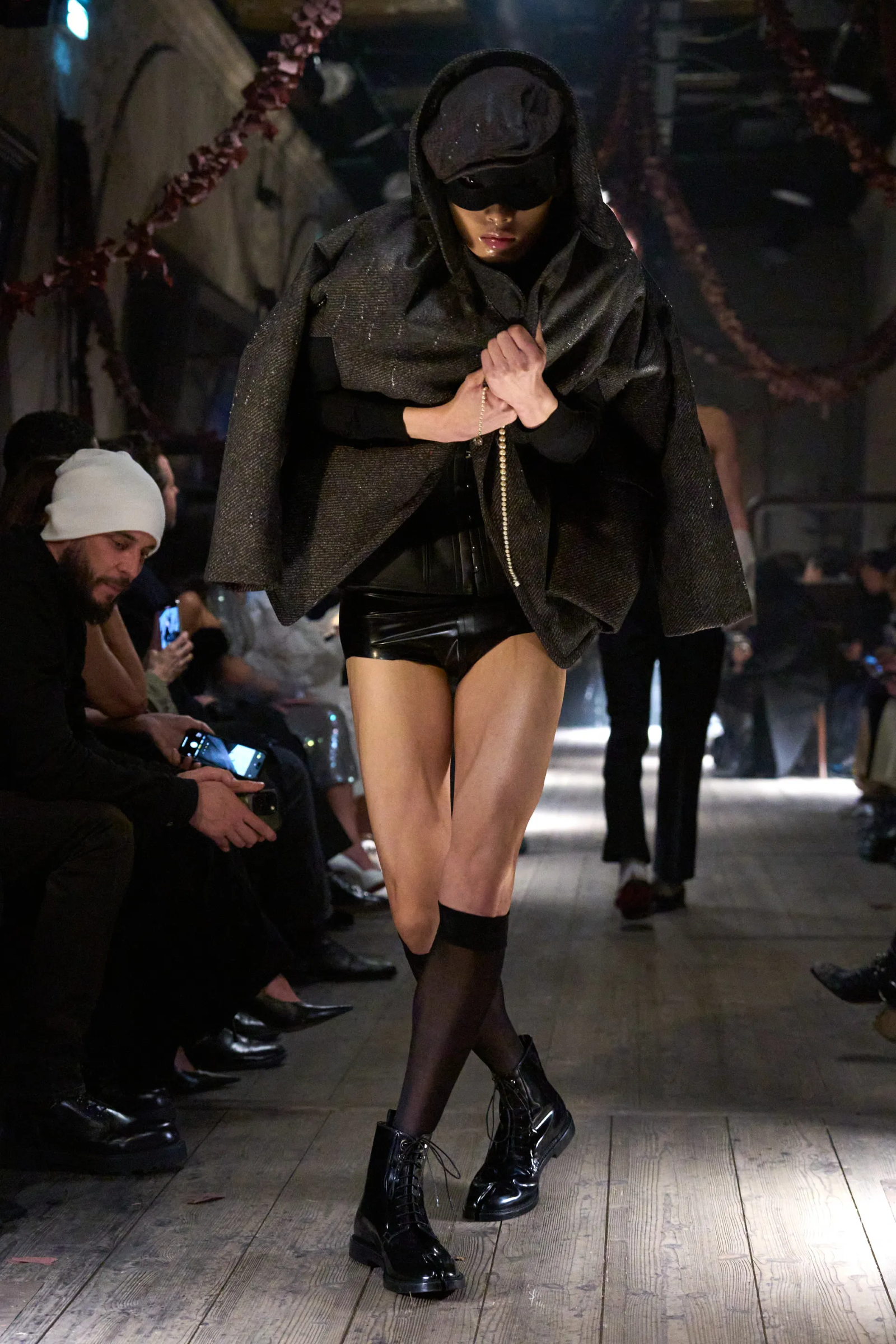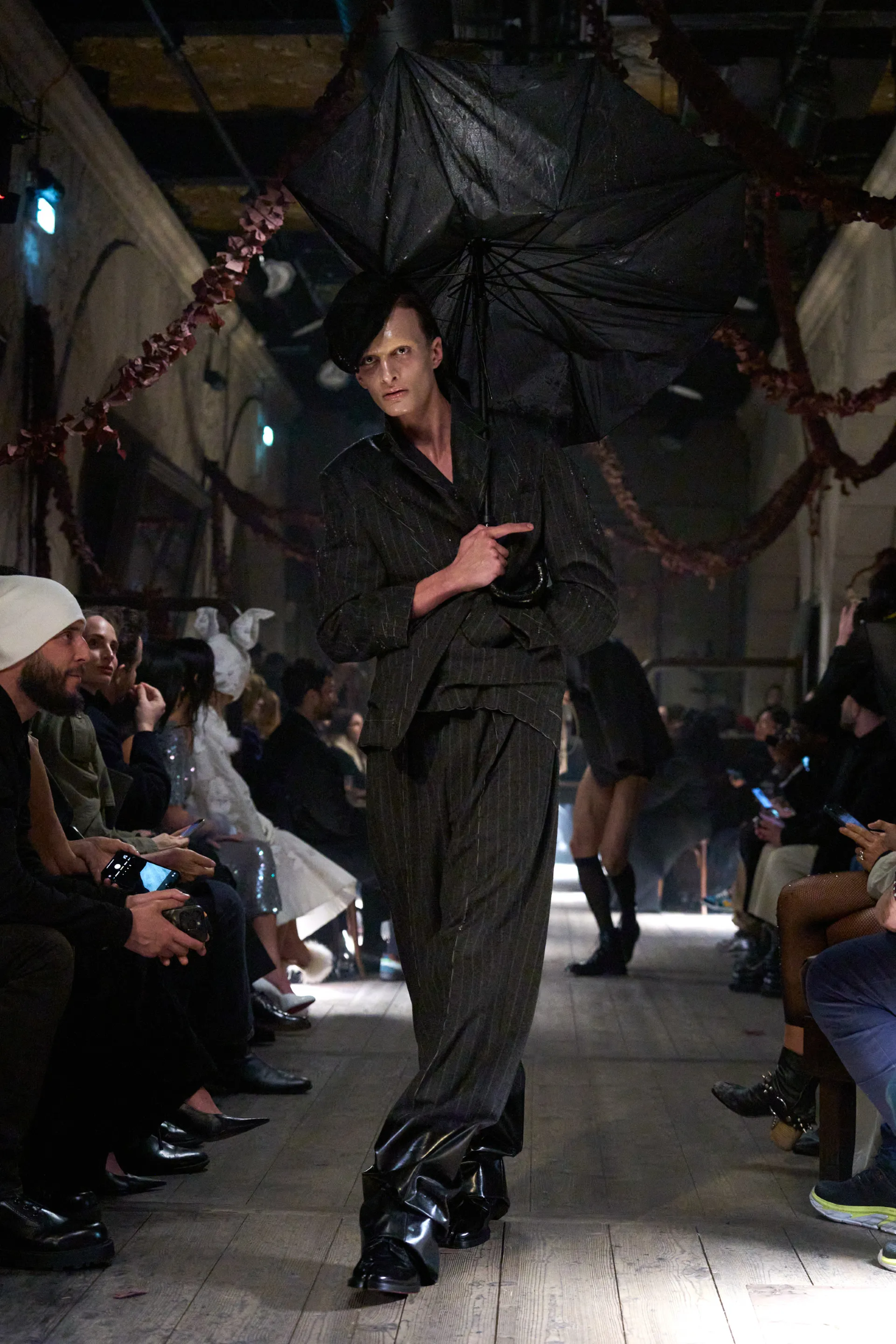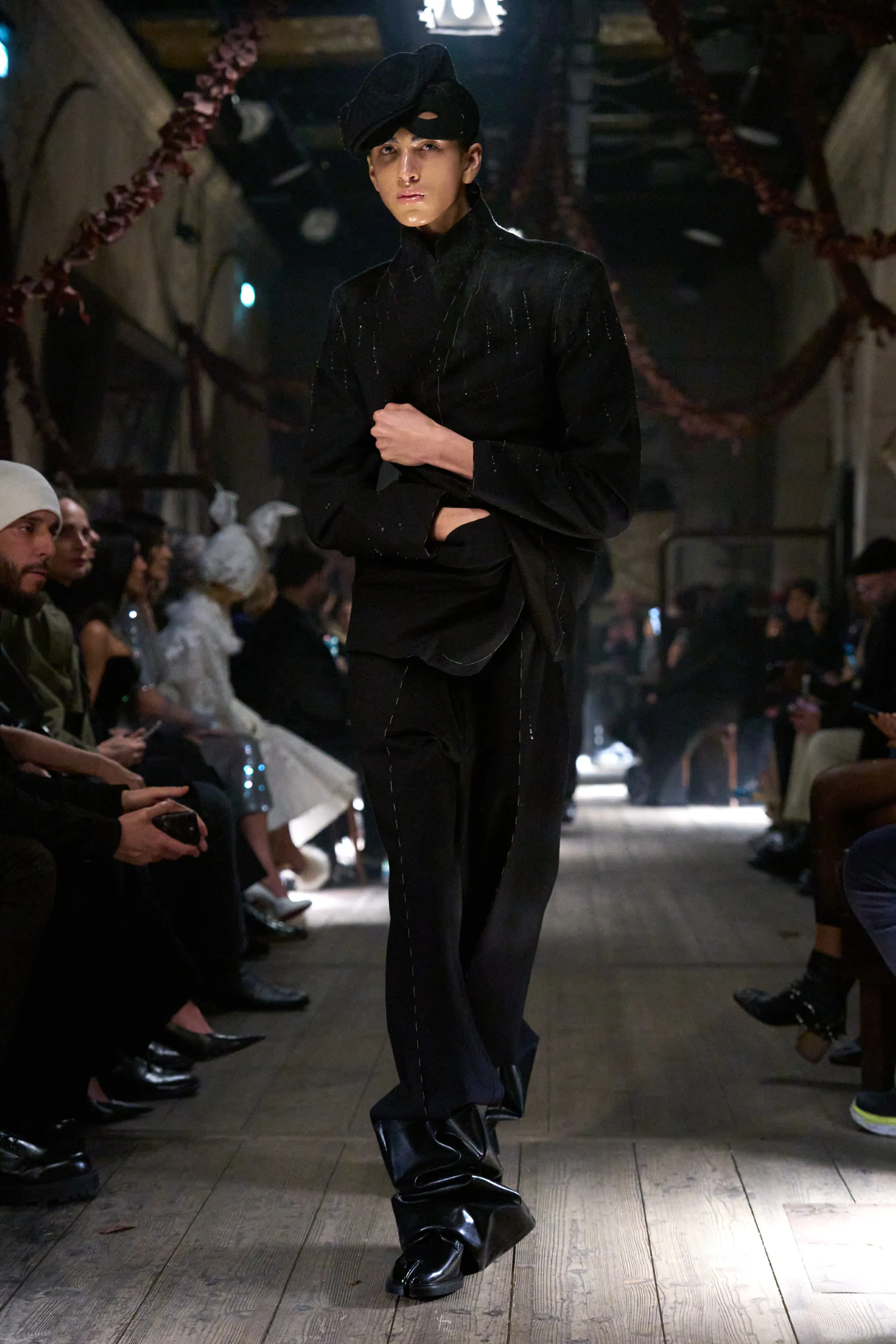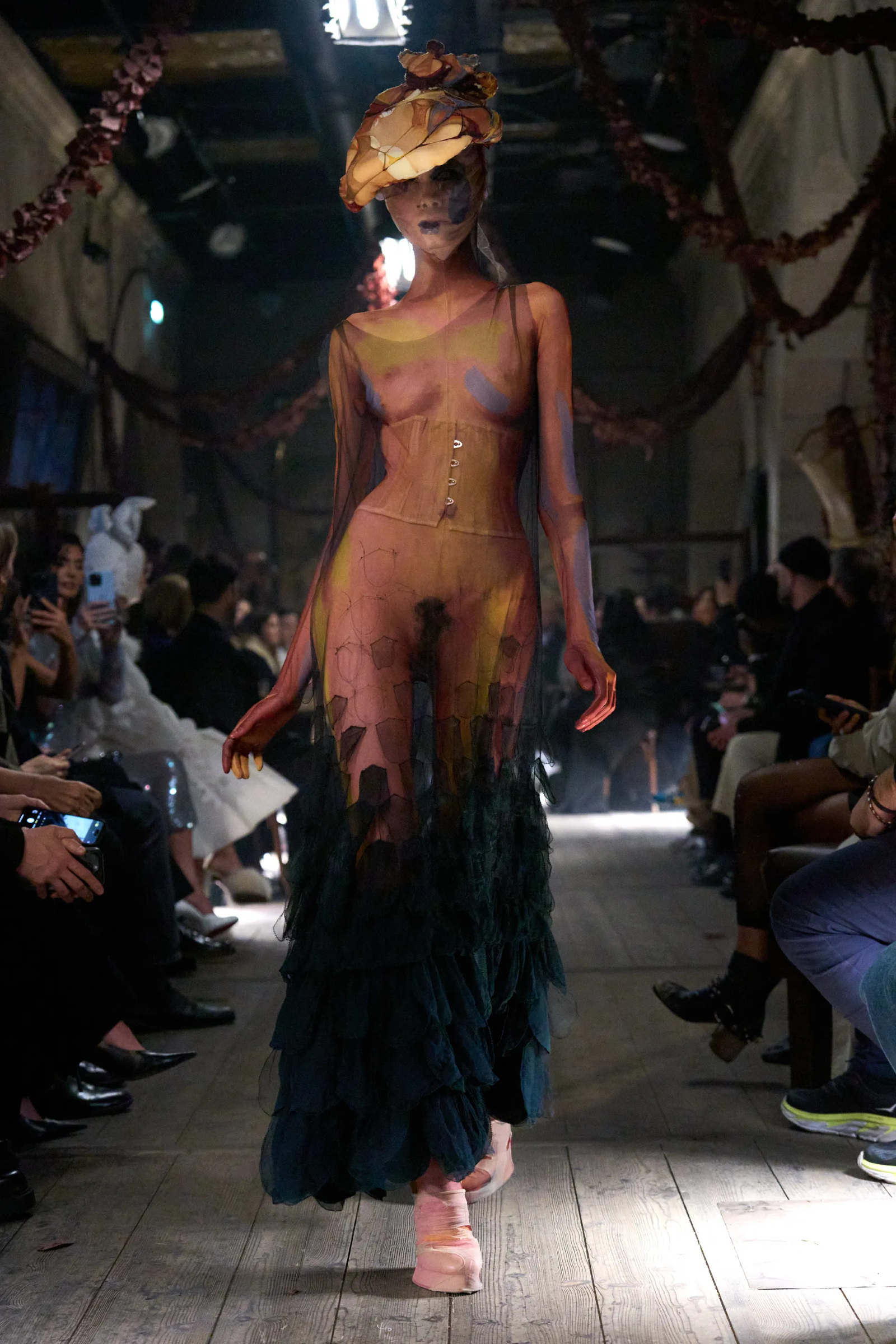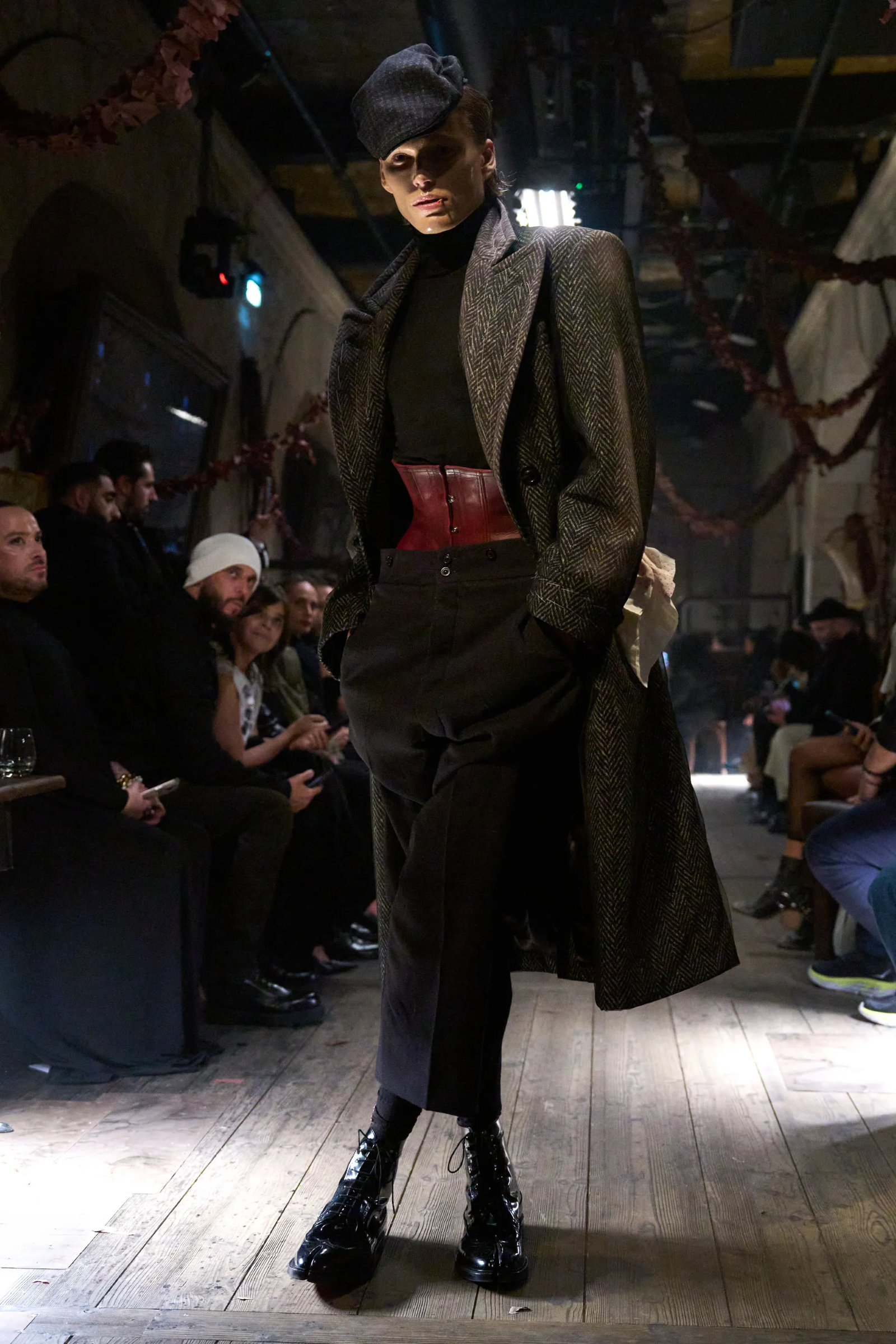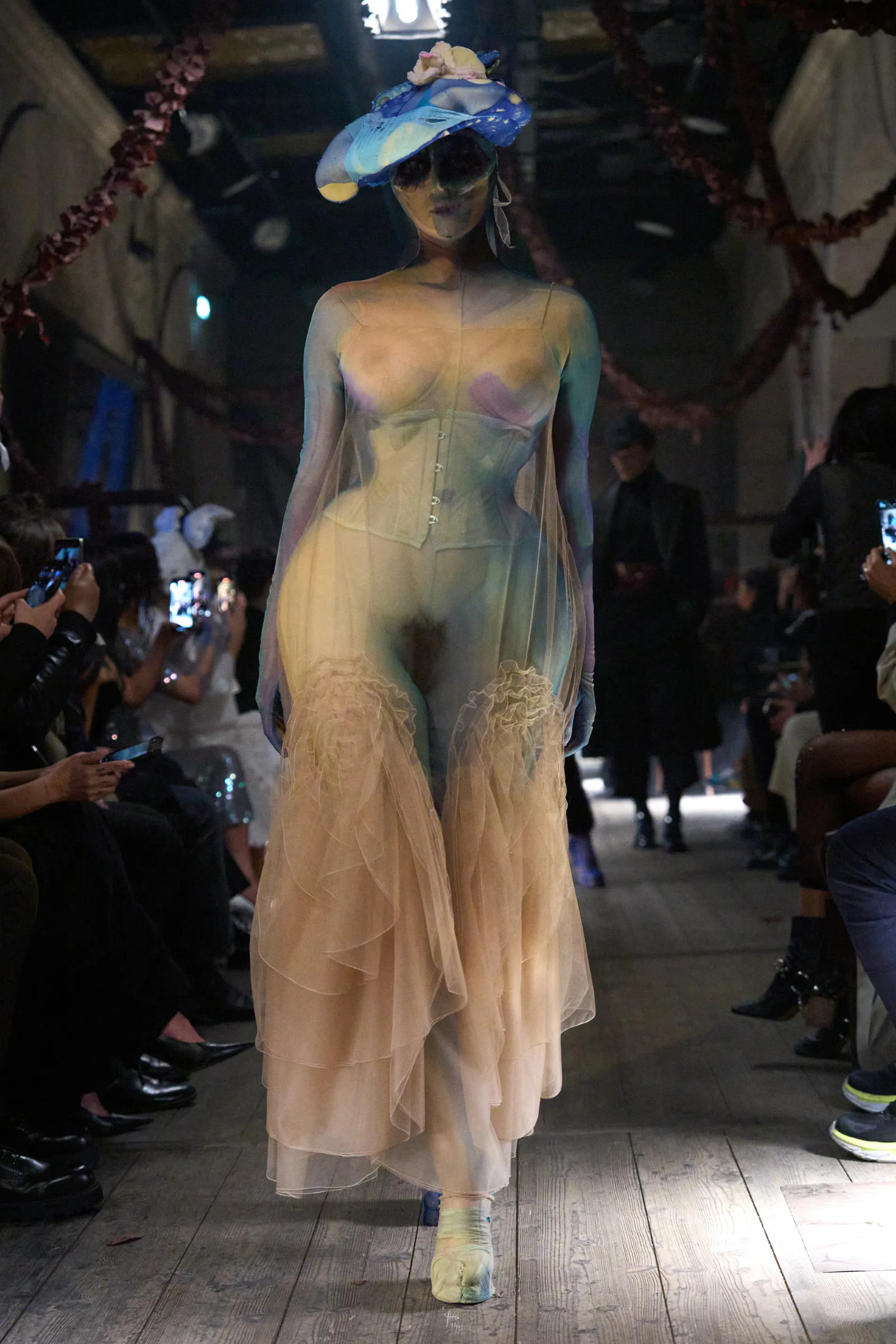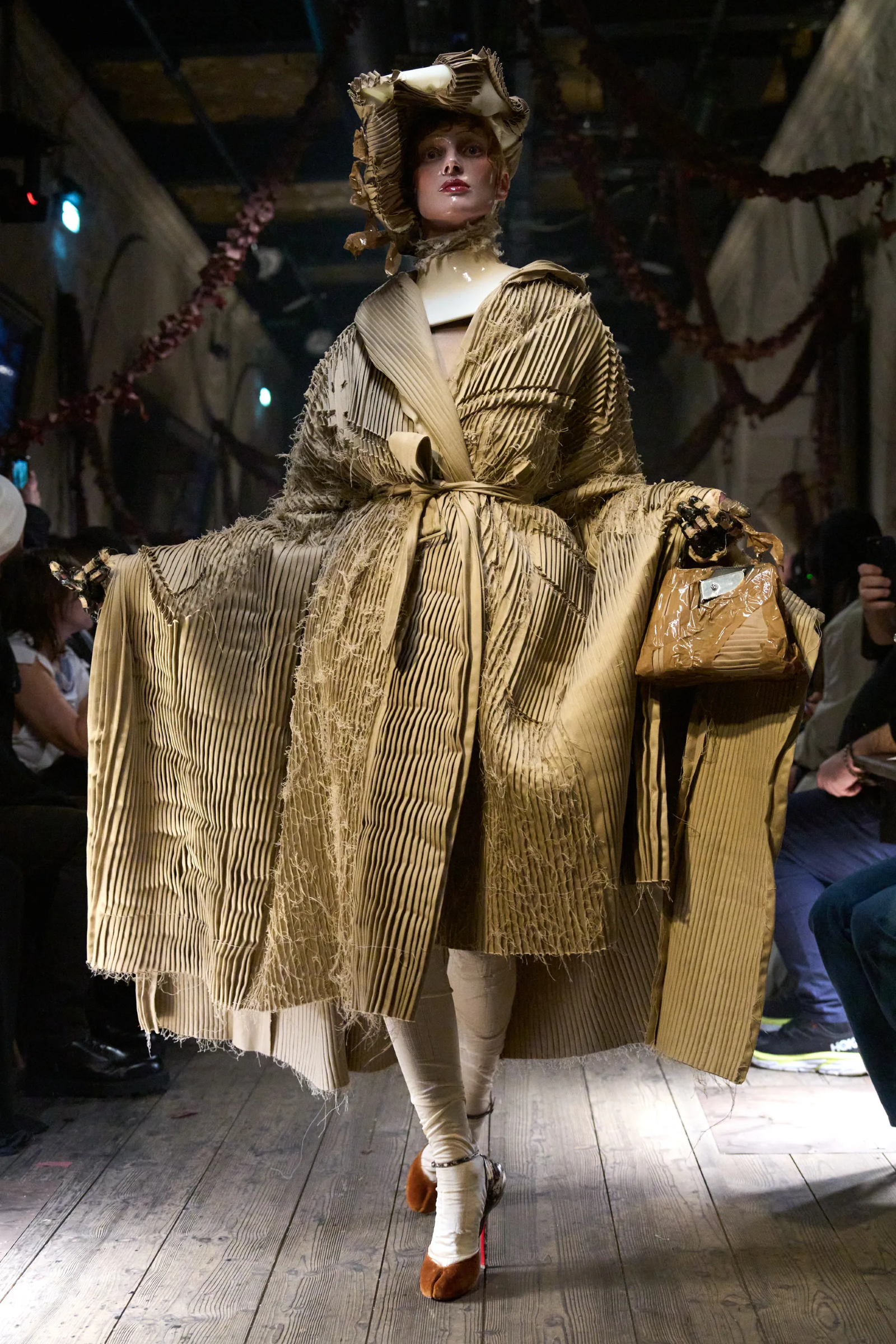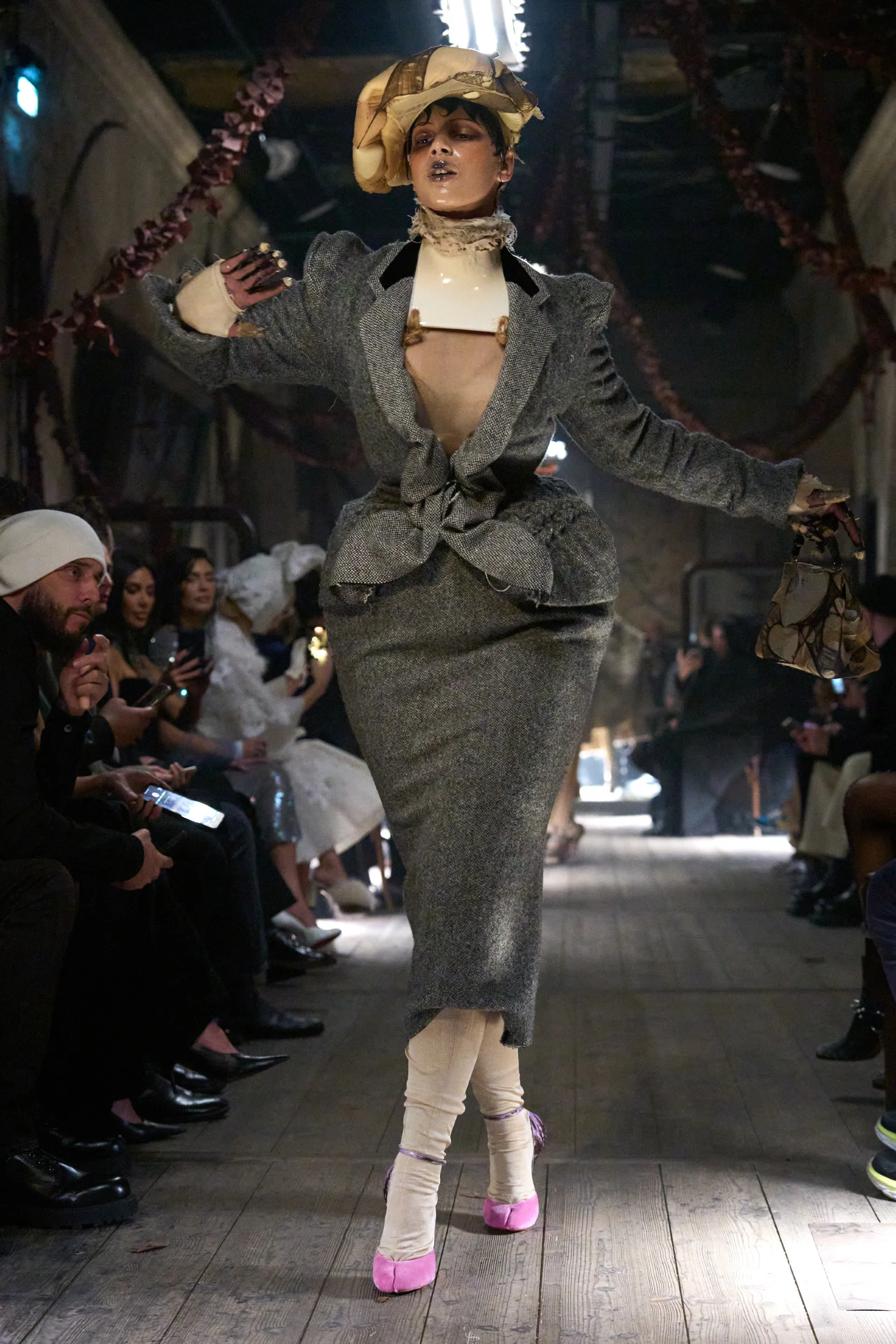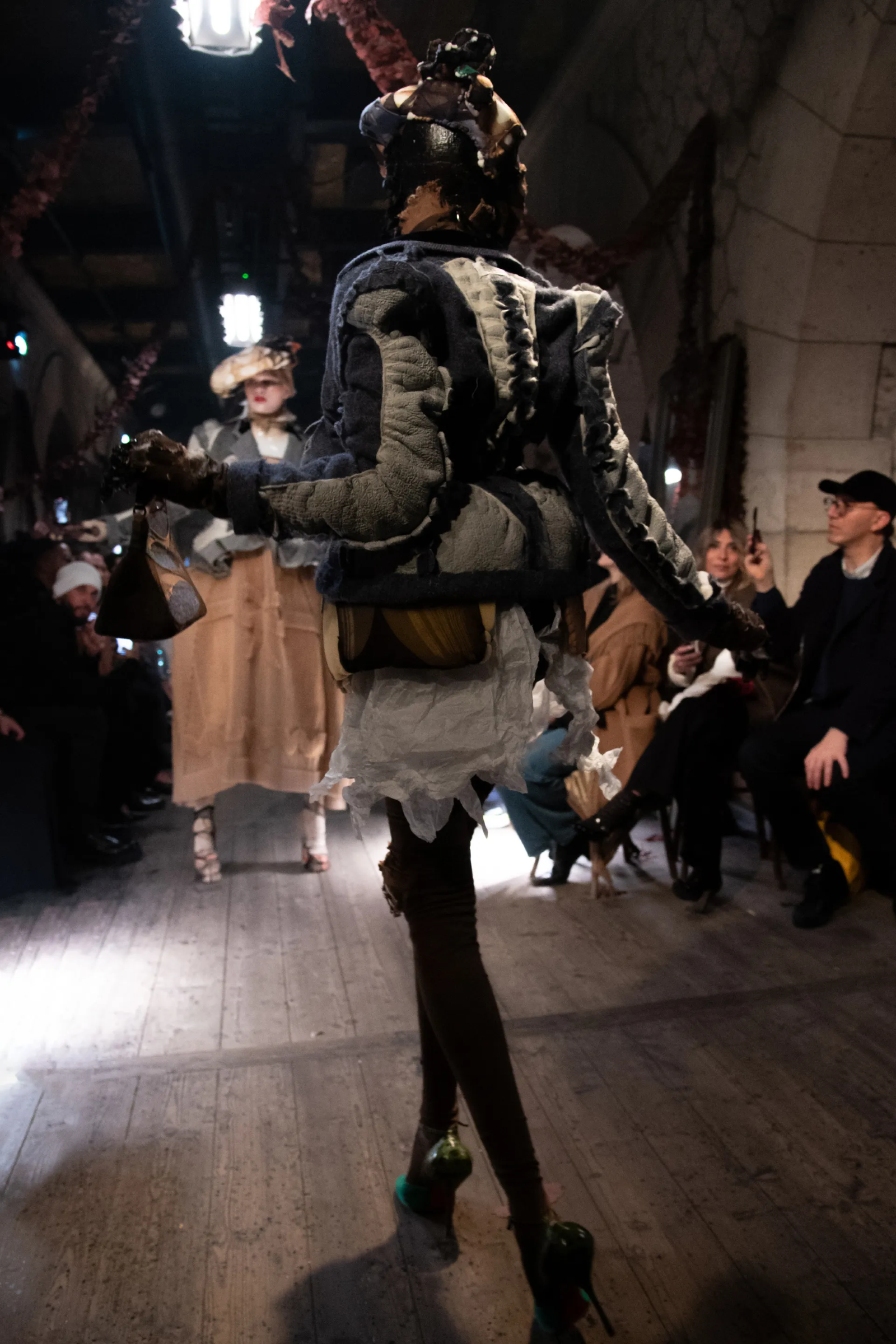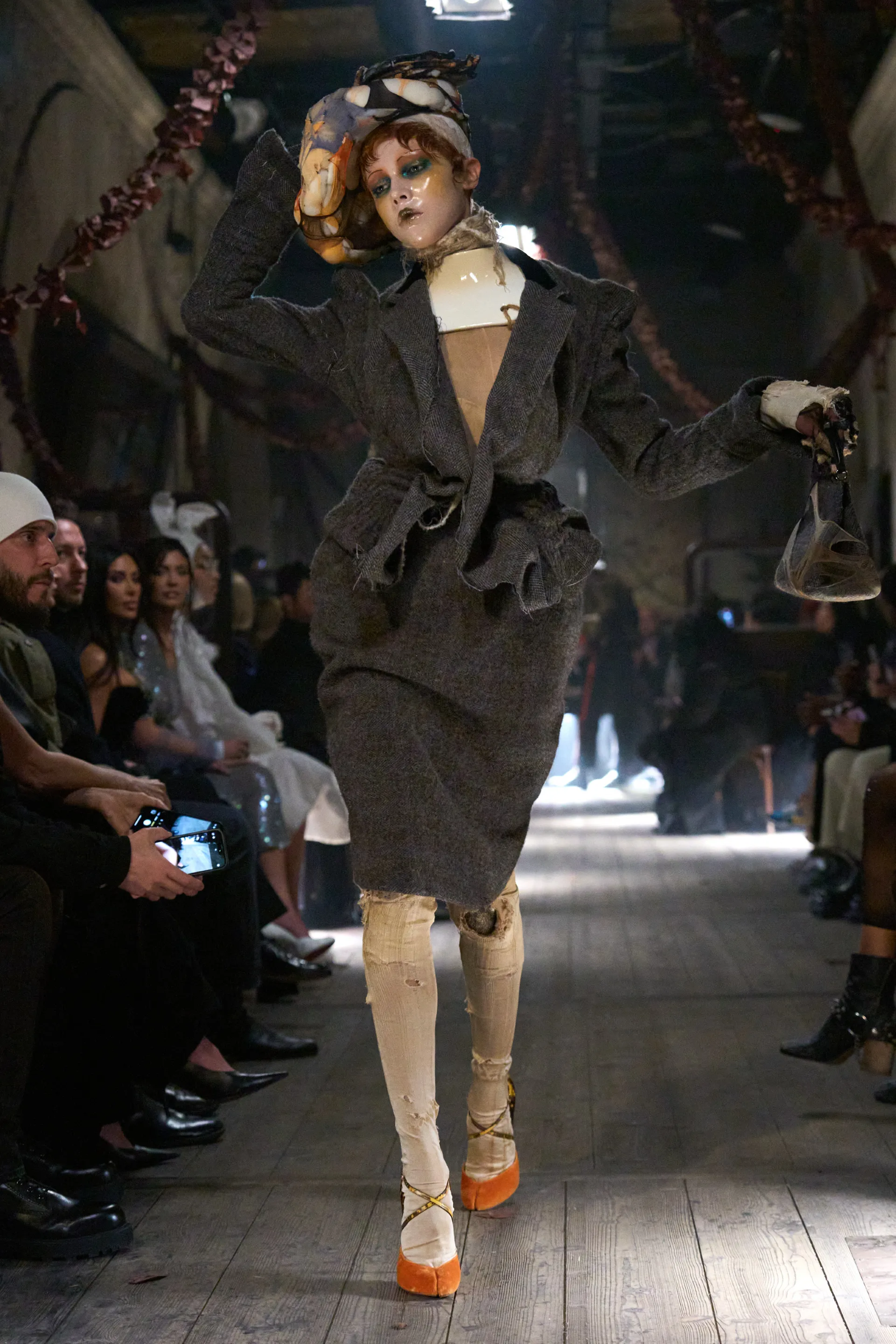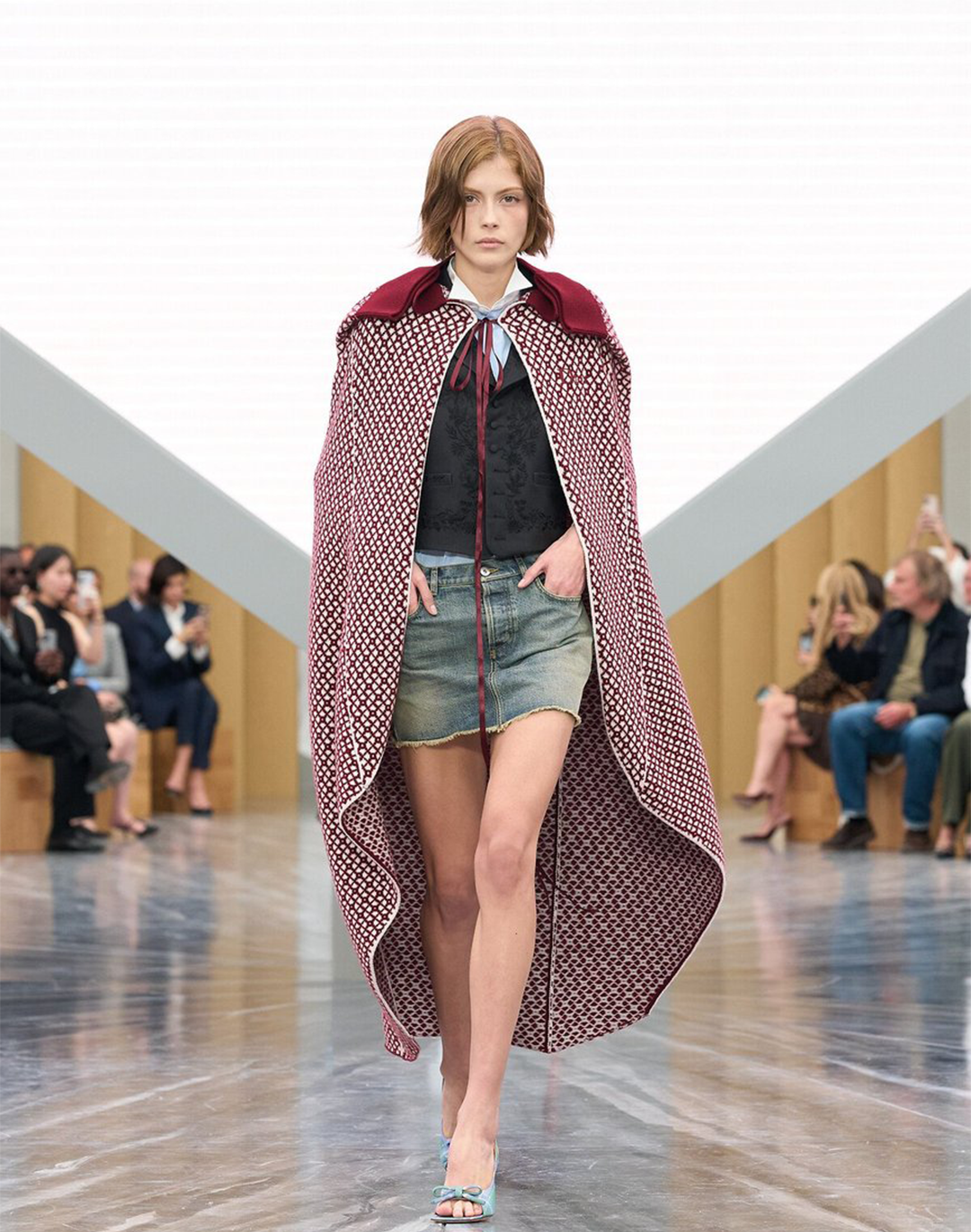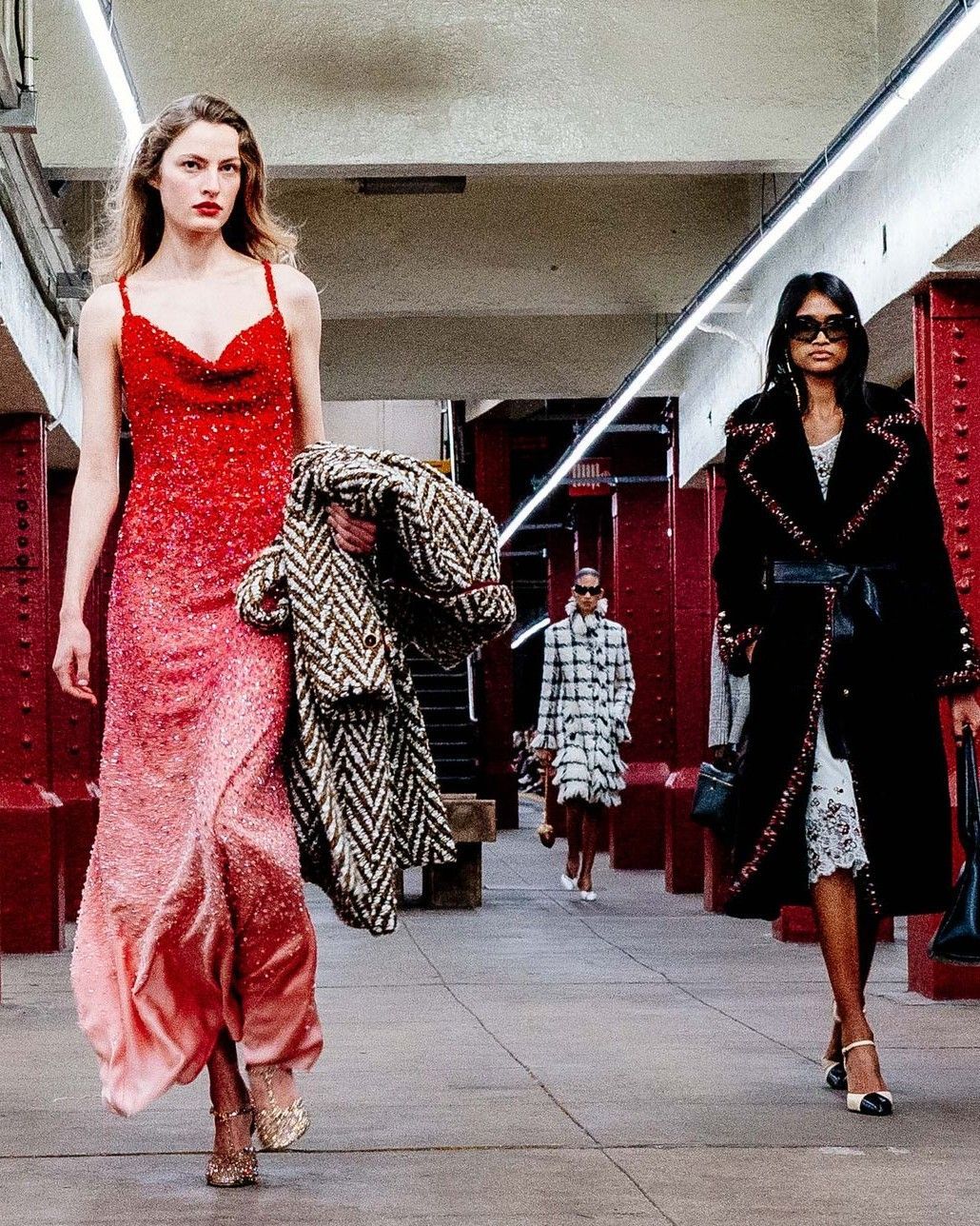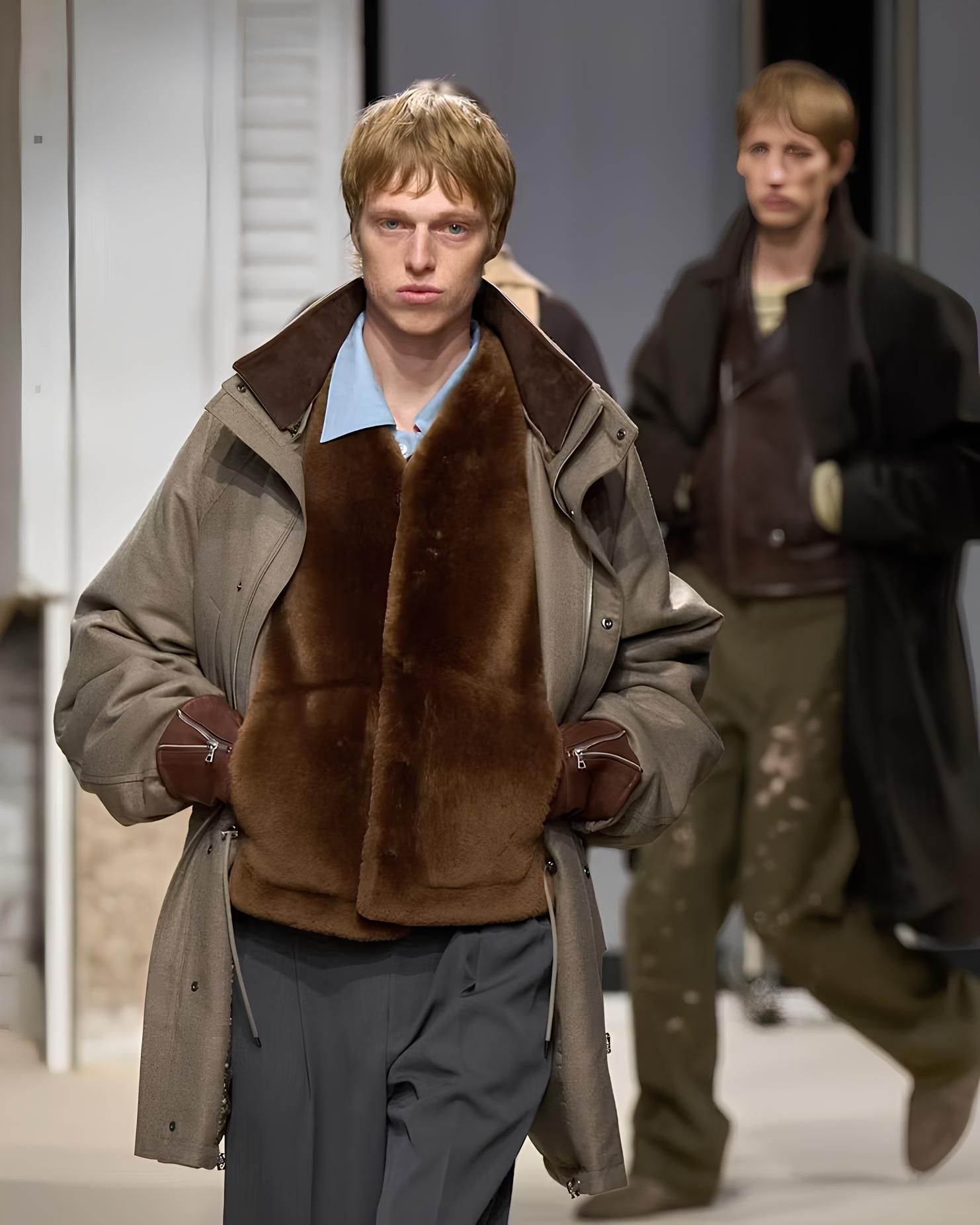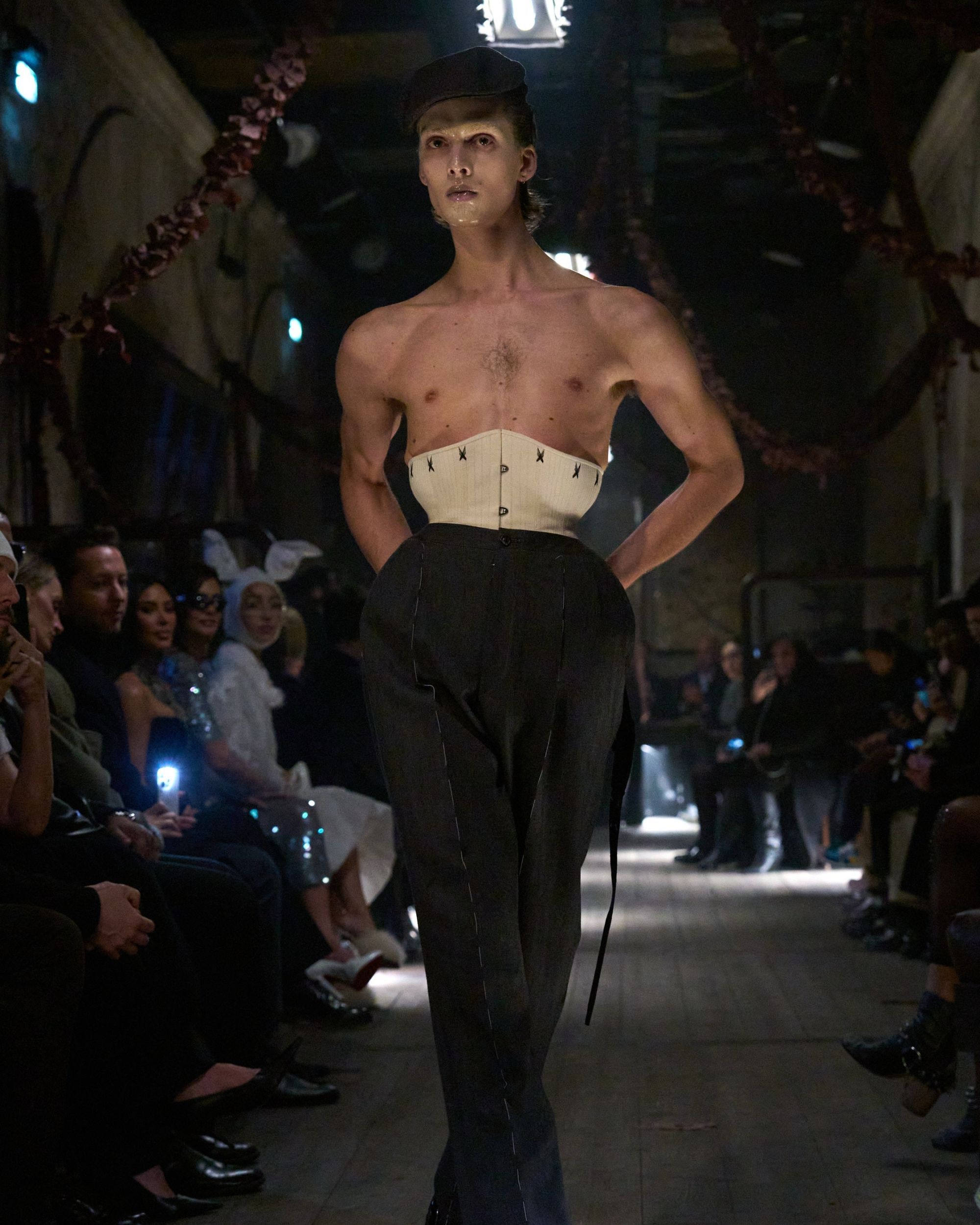
John Galliano's ghostly cabaret for Margiela Finally, a little fantasy
We live in arid, extremely arid, almost desert-like times. As Leon Talley famously said, "There is a famine of beauty," and to that famine, we add, a recent deep creative drought that has collectively trapped us in the mundane and trivial of "elevated basics." This year, in Paris as well as in Milan, fashion appeared sick with realism, accustomed to reflecting on the present and its frankly mundane problems, creating metaphors for social media, and selling clothes that were just themselves. Unfortunately, there is nothing more vulgar than the present – only because we are in it. In a fashion where even identity is a commercial strategy (paraphrasing Carlo Mazzoni's recent article on Lampoon), there was a need for a truly artistic, theatrical show capable of creating that "dream," which for many is still the primary characteristic of an industry that, more than fashion itself, deals with luxury clothing. That's why John Galliano's latest show for Maison Margiela, a Haute Couture or "Artisanal" show as the house defines it, literally shook the pillars of the Earth for everyone present and even for the absent ones. A film critic years ago described Atom Egoyan's film Exotica as a "turbid aquarium where the ghosts of human desire swim," and a similar spectacle is what closed, on a very high note (accompanied by the music of Lucky Love and Hometown Glory by Adele, a song about the poverty and beauty of the suburbs), the Couture Week in Paris.
Staged during the first full moon of the year under the Pont Alexandre III, amidst fog, gas lights, and a sense of decadent underworld, inspired by the gloomy muses of the early 20th century by Kees van Dongen and the twilight photographs of Brassaï, Margiela's triumph surpassed the sum of its individual parts. Interestingly, precisely for this show, one can speak of fashion but not of clothing: the burlesque dolls, the outcasts walking contracted by the cold in closed and contorted coats, the Junos and sickly nymphs that would have pleased Baudelaire were dressed only in corsets and Belle Époque dresses of completely transparent organza. The makeup resembled that of unsettling porcelain dolls or faces smeared with oil, disheveled hairstyles and hats expressed a romantic torment, a taste for drama and beauty inherent in every decay. The ample, naked bodies, confined within the corsets, were exposed as if those vintage garments had been devoured by moths until reaching their finest and most intangible soul, the disturbing and funereal sensuality combined, and even a surreal sense of the grotesque that erased some faces and outlined the breasts of the models with brushstrokes imprinted on the fabric of the painted stockings – there was nothing consoling and reassuring in this runway, no affectation of energy and dynamism, no false optimism. It was a noir tale, a Parisian mystery worthy of Eugene Sue, a concept finally detached from the obsession of describing, commenting, and reacting to the present.
To return to Baudelaire, the most cursed and Parisian of all poets, and to his poem Danse Macabre, which could have served as a perfect accompaniment to the show, it would be easy to associate the eternal verse "Ô charme d’un néant follement attifé!" with this parade of skeletons and bare flesh, with this remix of death and desire. It is just and sacrosanct that fashion, as a realm of human creativity, traverses all shades of the emotional palette, even the most raw and disturbing. For too long, we have grown accustomed to conceiving fashion as a luxury unto itself, and we have marginalized the voices of the most "damned" designers, such as Jun Takahashi, who had to apologize for using butterflies in his latest show; Henri Alexander Levy and his beautifully corrupted world; Ziggy Chen, and so on. For years, the fashion industry, bent to the needs of commerce, has had to speak to the public in always positive and sunny terms, renouncing a range of human emotions as visceral as they are dark. These were the years of the "decade of smoothness," dominated by both Galliano and McQueen, where one could still aestheticize evil without offending the probity and impeccable moral sensibility of the audience - if you long for a runway that proves it, go watch Andrew Groves's transgressive SS99 runway or the macabre presentations of Carol Christian Poell. Fashion loves to cultivate dreams, indeed, but it has forgotten to visit its nightmares.
The best part, however, is that Galliano's message, the atmosphere he created, the narrative he established, so far removed from the terrible, plasticized prose of corporate storytelling, would be understandable even to those lacking the critical tools or the cultural and artistic background necessary to decipher all its elements. There was a lot of technique at play in the show: the transparent organza garments and the aforementioned painted stockings, but also the weaves and textures of wool illusionistically impressed into silk, the latex drapes in which Gwendoline Christie was wrapped. Beyond the atmosphere that will be praised by a thousand other voices, Couture was fully present and in its most subtle, "magical," and stunning form. Many sentimental or idealistic pens will spill rivers of ink on nostalgia, on the tragic commerciality of today's fashion, on the desire for fashion to return to being the grand dream machine of the past. Don't listen to them: their hearts blind them, and these considerations distract from what is truly important. Namely, that Galliano has demonstrated how, even today, the space to explore the shadowy realms and the darkest sides of the human imagination exists—only that no one wants to explore it.










































